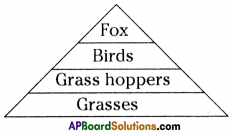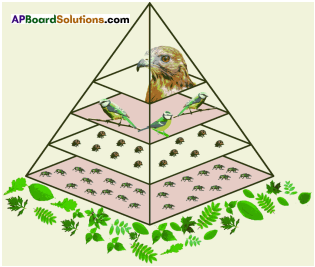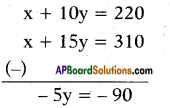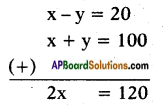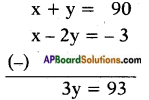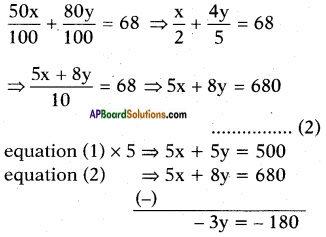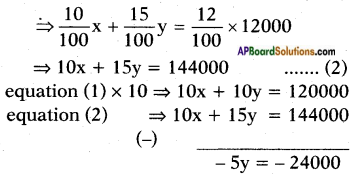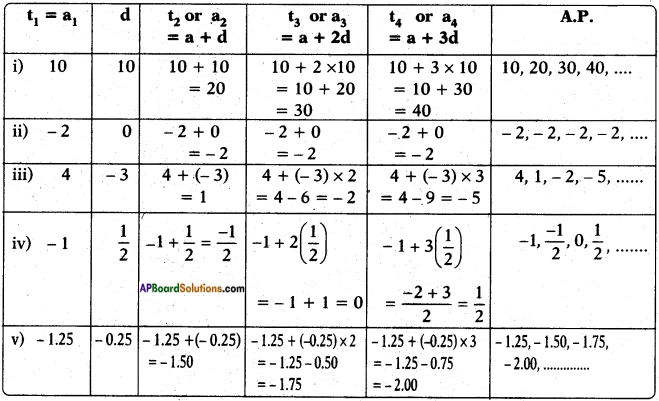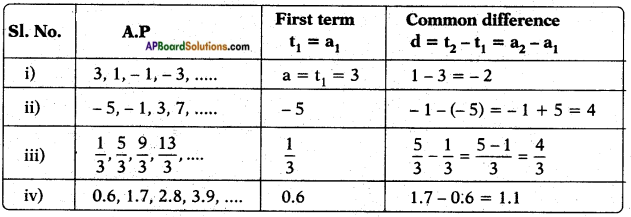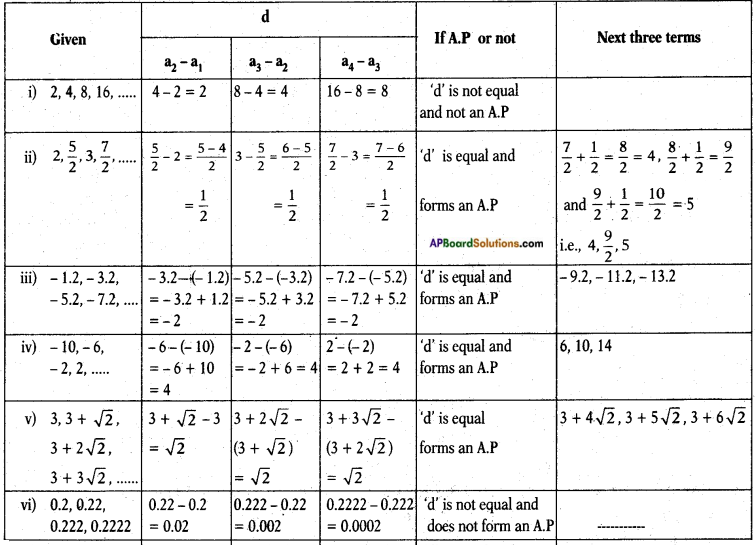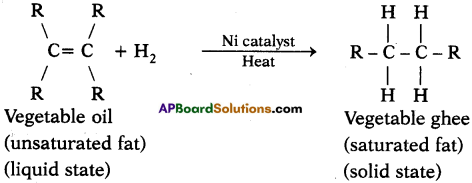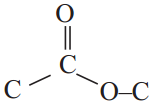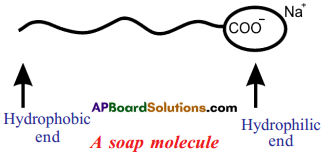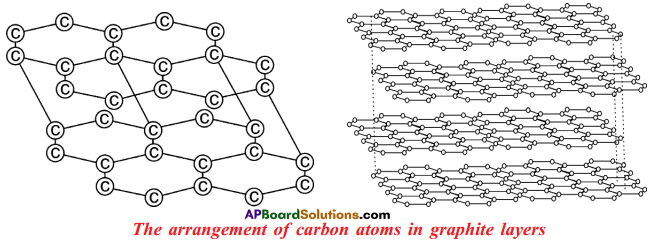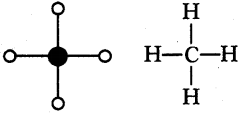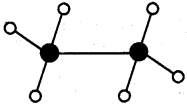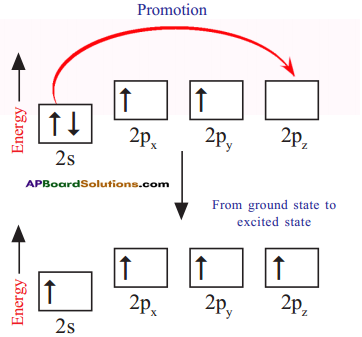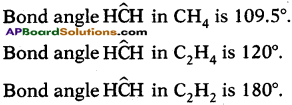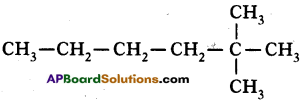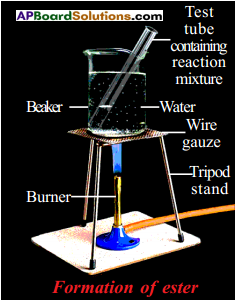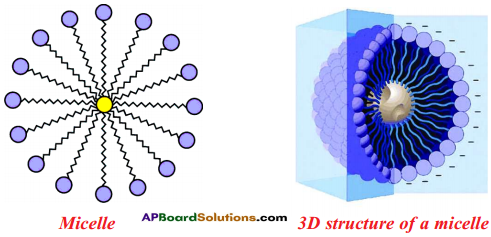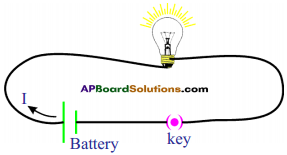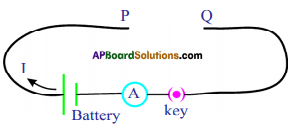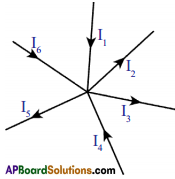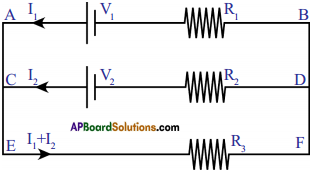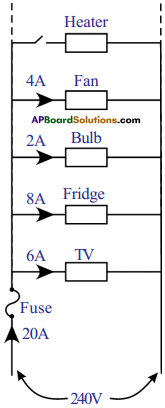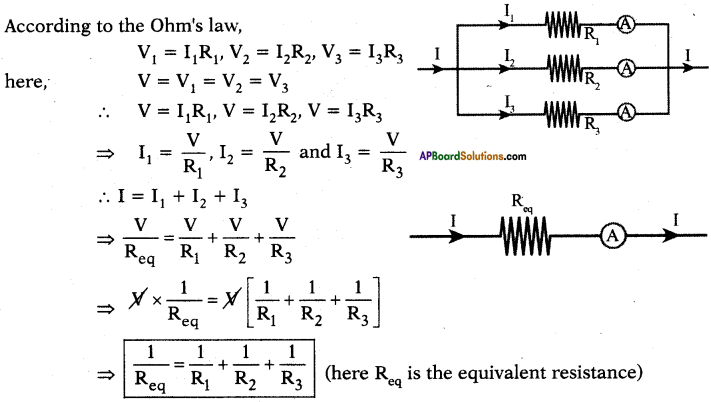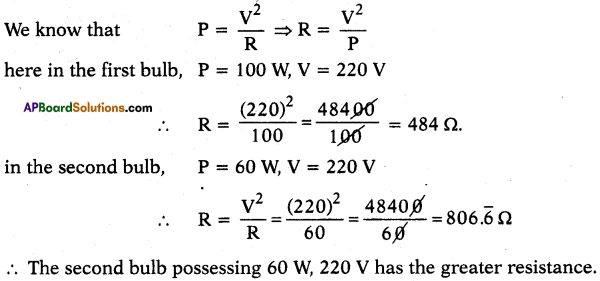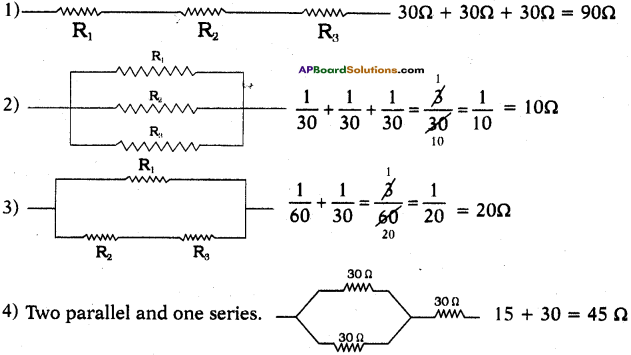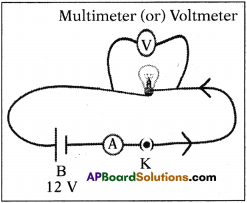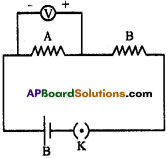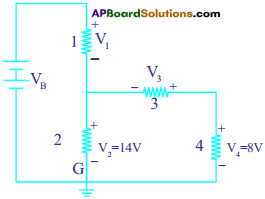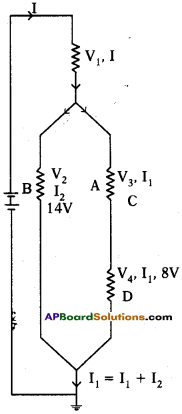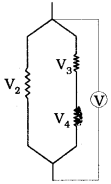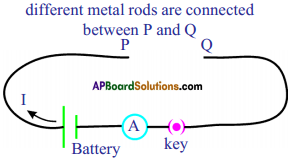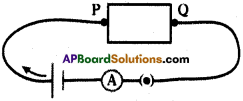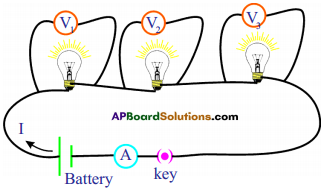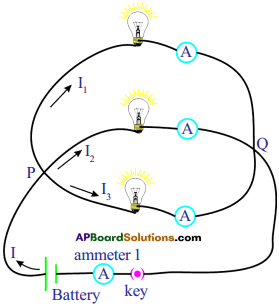AP State Board Syllabus AP SSC 10th Class Telugu Solutions 10th Class Telugu Grammar Questions and Answers, Notes.
AP State Syllabus SSC 10th Class Telugu Grammar Questions and Answers
సమాపక – అసమాపక క్రియలు
ఈ కింది వాక్యాలలోని క్రియలను గమనించండి.
1) ఉదయ్ భోజనం చేసి సినిమాకు వెళ్ళాడు.
2) వైష్ణవి పుస్తకం చదివి నిద్రపోయింది.
3) అరుణ్ చిత్రాలు గీసి ప్రదర్శనకు పెట్టాడు.
అ) సమాపక క్రియలు :
పై వాక్యాలలో ప్రతివాక్యం చివర ఉన్న వెళ్ళాడు, పెట్టాడు వంటి క్రియలు, పని పూర్తి అయ్యిందని తెలుపుతున్నాయి. వీటిని సమాపక క్రియలు అంటారు.
అసమాపక క్రియలు :
వాక్యం మధ్యలో ఉన్న ‘చేసి’, ‘గీసి’, ‘చదివి’ – అన్న క్రియలు పని పూర్తికాలేదని తెలుపుతున్నాయి. వీటిని అసమాపక క్రియలు అంటారు.
ఇ) అసమాపక క్రియా – భేదాలు
1) క్వార్ధకం : (భూతకాలిక అసమాపక క్రియ)
భాస్కర్ ఆట ఆడి, అలసిపోయి ఇంటికి వచ్చాడు. ఈ వాక్యంలో ‘భాస్కర్’ అనేది కర్త. ‘వచ్చాడు’ అనేది కర్తృ వాచకానికి చెందిన ప్రధాన క్రియ.
ఇక ఆడి, అలసి అనేవి కర్తృవాచక పదానికి చెందిన ఇతర క్రియలు. ఆడి, అలసి అనేవి క్రియలే కాని, వాటితో పూర్తి భావం తెలియడం లేదు. ఆడి, అలసిపోయి అనే క్రియల తర్వాత, “ఏమి చేస్తాడు ?” అనే ప్రశ్న వస్తోంది. ఆడి, అలసిపోయి అనే క్రియలు, భూతకాలంలోని పనిని సూచిస్తున్నాయి. వీటిని భూతకాలిక అసమాపక క్రియలనీ, ‘క్త్వార్థకం’ అని పిలుస్తారు.
ఈ క్రియలన్నీ ‘ఇ’ కారంతో అంతమవుతాయి. అంటే చివర – ‘ఇ’ అనే ప్రత్యయం చేరిన క్రియారూపం ‘క్వార్థం’.
ఉదాహరణలు :
పుష్ప అన్నం తిని నిద్రపోయింది. ఇందులో ‘తిని’ అనేది “క్వార్ధకం” (అసమాపక క్రియ).
2) శత్రర్థకం: (వర్తమాన అసమాపక క్రియ)
అఖిలేశ్ మధుకర్తో ‘మాట్లాడుతూ’ నడుస్తున్నాడు. ఈ వాక్యంలో ‘నడుస్తున్నాడు’ అనే ప్రధానక్రియకు, ‘మాట్లాడుతూ’ అనే ఉపక్రియ వర్తమాన కాలంలో ఉండి, అసమాపక క్రియను సూచిస్తుంది.
ఈ విధంగా ‘మాట్లాడు’ అనే ధాతువుకు ‘తూ’ అనే ప్రత్యయం చేరుతున్నది. ఇలా చేరడం వల్ల వర్తమాన అసమాపక క్రియగా మారుతుంది. వర్తమాన అసమాపక క్రియను ‘శత్రర్థకం’ అంటారు.
ఉదా :
1) జ్యోతిర్మయి కంప్యూటర్ లో ఏదో చదువుతూ ముఖ్యాంశాలు రాసుకుంది.
2) మాధవి ఆలోచిస్తూ పుస్తకం చదువుతున్నది.
గమనిక : పై వాక్యాలలో 1) చదువుతూ 2) ఆలోచిస్తూ అనేవి శత్రర్థకాలు.
3) చేదర్థకం :
(ధాతువుకు తే, ఐతే అనే ప్రత్యయాలు చేరతాయి.) కింది వాక్యం చదవండి.
“కష్టపడి పనిచేస్తే ఫలితం దానంతట అదే వస్తుంది.”
పై వాక్యంలో ప్రధాన క్రియ ‘వస్తుంది’ – ఇది ఫలితాన్ని సూచిస్తుంది. ఈ ఫలితం రావాలంటే షరతును విధించడానికి చేర్చే అసమాపక క్రియ, చేస్తే ఇది కారణం. అది కార్యం. ఈ విధంగా సంక్లిష్ట వాక్యాల్లో ప్రధాన క్రియ సూచించే పని జరగటానికి షరతును సూచించే క్రియను ‘చేదర్థకం’ అంటారు. చేత్ అర్థాన్ని ఇచ్చేది – చేదర్థకం. వీటిలో ధాతువుకు తే, ఐతే అనే ప్రత్యయాలు చేరతాయి.
ఉదా :
మొక్కలు నాటితే అవి పర్యావరణానికి మేలు చేస్తాయి.
అభ్యాసం :
ఈ కింది వాక్యంలోని అసమాపక క్రియలను రాయండి.
1) రమ రోడ్డు మీద ఉన్న ఒక కాగితం ముక్కను తీసి దగ్గరలో ఉన్న చెత్తకుండీలో వేసి మళ్ళీ సైకిలెక్కి వెళ్ళిపోయింది.
జవాబు:
తీసి, వేసి, ఎక్కి అనేవి ‘క్వార్ధకం’ అనే అసమాపక క్రియలు.

అ) తద్ధర్మ క్రియలు :
ఒక వస్తువు స్వభావాన్నీ , ధర్మాన్నీ తెలిపే క్రియలనూ, నిత్య సత్యాలను తెలిపే వాటినీ, ‘తధ్ధర్మ క్రియలు’ అంటారు.
ఉదా :
1) సూర్యుడు తూర్పున ఉదయిస్తాడు.
2) సూర్యుడు పడమట అస్తమిస్తాడు.
3) పక్షి ఆకాశంలో ఎగురుతుంది.
ప్రశ్నా వాక్యాలు :
ఎప్పుడు, ఎక్కడ, ఎందుకు, ఎవరు, ఏమిటి అనే పదాలను ఉపయోగించి, ప్రశ్నార్థక వాక్యాలు తయారుచేయవచ్చునని మీకు తెలుసు. వాక్యం చివరలో ‘ఆ’ అనే ప్రత్యయాన్ని చేర్చి కూడా ప్రశ్నా వాక్యంగా మార్చవచ్చు.
ఉదా :
1) మీరు బడికి వెళతారా?
2) దైన్య స్థితిని చూస్తారా?
అభ్యాసం :
కింది వాటిని జతపరచండి.
| 1) వాటిని ఇనప్పెట్టెలో పెట్టి తాళాలు వేసి | అ) చేదర్థకం |
| 2) కాపలా కాస్తూ హాయిగా తిని కూర్చో | ఆ) శత్రర్థకం |
| 3) మానసికంగా ఎదిగినట్లైతే | ఇ) ప్రశ్నార్థకం |
| 4) నిర్భయంగా జీవించాలని ఆశించడం తప్పా? | ఈ) క్వార్ధకం |
జవాబు:
| 1) వాటిని ఇనప్పెట్టెలో పెట్టి తాళాలు వేసి | ఈ) క్వార్ధకం |
| 2) కాపలా కాస్తూ హాయిగా తిని కూర్చో | అ) చేదర్థకం |
| 3) మానసికంగా ఎదిగినట్లైతే | ఆ) శత్రర్థకం |
| 4) నిర్భయంగా జీవించాలని ఆశించడం తప్పా? | ఇ) ప్రశ్నార్థకం |
ఐచ్ఛిక సమాధాన ప్రశ్నలు
1) భూతకాలిక అసమాపక క్రియను ఏమంటారు?
A) చేదర్థకం
B) శత్రర్థకం
C) క్వార్థకం
D) అనుమత్యర్థకం
జవాబు:
C) క్వార్థకం
2) కవిత గ్రంథాలయానికి వెళ్ళి పుస్తకాలు తెచ్చింది. గీత గీసిన పదం ఏ ప్రక్రియకు చెందినది?
A) క్వార్థకం
B) శత్రర్థకం
C) చేదర్థకం
D) ఆశీరార్థకం
జవాబు:
A) క్వార్థకం
3) వర్తమాన అసమాపక క్రియను ఏమంటారు?
A) క్వార్థకం
B) శత్రర్థకము
C) చేదర్థకం
D) అభ్యర్థకం
జవాబు:
B) శత్రర్థకము

4) షరతును విధించడానికి చేర్చే అసమాపక క్రియ ఏది?
A) చేదర్థకం
B) క్వార్థకం
C) శత్రర్థకం
D) విధ్యర్థకం
జవాబు:
A) చేదర్థకం
5) ధాతువుకు తే, ఐతే అనే ప్రత్యయాలు చేరే అసమాపక క్రియను ఇలా పిలుస్తారు?
A) క్వార్థకం
B) చేదర్థకం
C) శత్రర్థకం
D) నిషేధార్థకం
జవాబు:
B) చేదర్థకం
6) శత్రర్థక క్రియను గుర్తించండి.
A) చేసి
B) చేయక
C) చేయుచున్
D) చేస్తే
జవాబు:
C) చేయుచున్
వాక్య భేదాలు
వాక్యాలు మూడు రకాలు :
1) సామాన్య వాక్యం
2) సంక్లిష్ట వాక్యం
3) సంయుక్త వాక్యం
1) ఉష పాఠం చదువుతున్నది.
2) మురళి మంచి బాలుడు.
1) సామాన్య వాక్యం :
గమనిక : మొదటి వాక్యంలో క్రియ ఉంది. రెండో వాక్యంలో క్రియ లేదు. ఈ విధంగా క్రియ ఉన్నా, లేకున్నా, ఒకే ఒక్క భావాన్ని ప్రకటించే వాక్యాలను సామాన్య వాక్యాలు అంటారు.
2) సంక్లిష్ట వాక్యం :
ఈ కింది సామాన్య వాక్యాలను కలిపి రాయండి.
ఉదా :
1) శ్రీకాంత్ అన్నం తిన్నాడు.
2) శ్రీకాంత్ బడికి వచ్చాడు.
జవాబు:
శ్రీకాంత్ అన్నం తిని, బడికి వచ్చాడు. (సంక్లిష్ట వాక్యం)
గమనిక :
పై వాక్యాలను కలిపినపుడు ఒక సమాపక క్రియ, ఒకటిగాని అంతకంటే ఎక్కువగాని అసమాపక క్రియలు ఉంటాయి. ఇటువంటి వాక్యాలను ‘సంక్లిష్ట వాక్యాలు’ అంటారు.
3) సంయుక్త వాక్యం :
సమ ప్రాధాన్యం కల వాక్యాలను కలపడం వల్ల ఏర్పడే వాక్యాలను ‘సంయుక్త వాక్యాలు’ అంటారు.
ఉదా :
1) సీత చదువుతుంది, పాడుతుంది.
2) అతడు నటుడు, రచయిత.
3) అశ్విని, జ్యోతి అక్కాచెల్లెండ్రు.
సామాన్య వాక్యాలు :
అ) రాజు అన్నం తిన్నాడు.
ఆ) గోపి పరీక్ష రాశాడు.
ఇ) గీత బడికి వెళ్ళింది.
గమనిక :
పై వాక్యాల్లో తిన్నాడు, రాశాడు, వెళ్ళింది అనే క్రియలు సమాపక క్రియలు. ప్రతి వాక్యంలో ఒకే సమాపక క్రియ ఉంది. ఇలా ఒకే సమాపక క్రియ ఉంటే, ఆ వాక్యాలను “సామాన్య వాక్యాలు’ అంటారు.
కొన్ని సామాన్య వాక్యాలు క్రియ లేకుండా కూడా ఉంటాయి.
ఉదా :
హైదరాబాదు మన రాష్ట్ర రాజధాని.
సామాన్య వాక్యాలు :
గీత బజారుకు వెళ్ళింది. గీత కూరగాయలు కొన్నది.
గమనిక :
పై సామాన్య వాక్యాలలో రెంటిలోనూ ‘గీత’ అనే నామవాచకం ఉంది. ఈ విధంగా తిరిగి చెప్పబడిన నామవాచకాన్ని తొలగించి, మొదటి వాక్యంలోని ‘వెళ్ళింది’ లోని క్రియను ‘వెళ్ళి’ అనే అసమాపక క్రియగా మార్చి రాస్తే సంక్లిష్ట వాక్యం ఏర్పడుతుంది.
సంక్లిష్ట వాక్యం ఉదా : గీత బజారుకు వెళ్ళి కూరగాయలు కొన్నది. (సంక్లిష్ట వాక్యం )
అభ్యాసం :
కింది సామాన్య వాక్యాల్ని సంక్లిష్ట వాక్యాలుగా మార్చి రాయండి.

అ) విమల వంట చేస్తుంది. విమల పాటలు వింటుంది. (సామాన్య వాక్యాలు)
జవాబు:
విమల వంట చేస్తూ పాటలు వింటుంది. (సంక్లిష్ట వాక్యం )
ఆ) అమ్మ నిద్ర లేచింది. అమ్మ ముఖం కడుక్కుంది. (సామాన్య వాక్యాలు)
జవాబు:
అమ్మ నిద్రలేచి ముఖం కడుక్కుంది. (సంక్లిష్ట వాక్యం )
అభ్యాసం :
కింది సంక్లిష్ట వాక్యాలను, సామాన్య వాక్యాలుగా మార్చి రాయండి.
1) తాత భారతం చదివి నిద్రపోయాడు. (సంక్లిష్ట వాక్యం )
జవాబు:
తాత భారతం చదివాడు. తాత నిద్రపోయాడు. (సామాన్య వాక్యాలు)
2) చెట్లు పూత పూస్తే కాయలు కాస్తాయి. (సంక్లిష్ట వాక్యం)
జవాబు:
చెట్లు పూత పూయాలి. చెట్లు కాయలు కాయాలి. (సామాన్య వాక్యాలు)
3) రాముడు నడుచుకుంటూ వెళ్ళి తన ఊరు చేరాడు. (సంక్లిష్ట వాక్యం)
జవాబు:
రాముడు నడుచుకుంటూ వెళ్ళాడు. రాముడు తన ఊరు చేరాడు. (సామాన్య వాక్యాలు)
అభ్యాసం :
కింది సామాన్య వాక్యాలను, సంక్లిష్ట వాక్యాలుగా మార్చి రాయండి.
ఉదా :
1) శర్వాణి పాఠం చదివింది. శర్వాణి నిద్రపోయింది. (సామాన్య వాక్యాలు)
జవాబు:
శర్వాణి పాఠం చదివి నిద్రపోయింది. (సంక్లిష్ట వాక్యం )
2) మహతి ఆట ఆడింది. మహతి అన్నం తిన్నది. (సామాన్య వాక్యాలు)
జవాబు:
మహతి ఆట ఆడి అన్నం తిన్నది. (సంక్లిష్ట వాక్యం)
3) నారాయణ అన్నం తింటాడు. నారాయణ నీళ్లు తాగుతాడు. (సామాన్య వాక్యాలు)
జవాబు:
నారాయణ అన్నం తింటూ నీళ్లు తాగుతాడు. (సంక్లిష్ట వాక్యం)
అభ్యాసం :
కింది సంక్లిష్ట వాక్యాలను, సామాన్య వాక్యాలుగా మార్చి రాయండి.
ఉదా :
1) శరత్ ఇంటికి వచ్చి అన్నం తిన్నాడు. (సంక్లిష్ట వాక్యం)
జవాబు:
శరత్ ఇంటికి వచ్చాడు. శరత్ అన్నం తిన్నాడు. (సామాన్య వాక్యాలు)
2) రజియా పాటపాడుతూ ఆడుకుంటున్నది. (సంక్లిష్ట వాక్యం)
జవాబు:
రజియా పాట పాడుతుంది. రజియా ఆడుకుంటున్నది. (సామాన్య వాక్యాలు)
సంయుక్త వాక్యం:
కింది వాక్యాలను గమనించండి.
విమల తెలివైనది. విమల అందమైనది – విమల తెలివైనది, అందమైనది.
ఇలా రెండు సామాన్య వాక్యాలు కలిసి, ఒకే వాక్యంగా ఏర్పడటాన్ని సంయుక్త వాక్యం అంటారు.
సంయుక్త వాక్యాలుగా మారేటప్పుడు వచ్చే మార్పులు :
అ) వనజ చురుకైనది. వనజ అందమైనది.
వనజ చురుకైనది, అందమైనది. (రెండు నామపదాల్లో ఒకటి లోపించడం)
ఆ) అజిత అక్క. శైలజ చెల్లెలు.
అజిత, శైలజ అక్కాచెల్లెళ్లు. (రెండు నామపదాలు ఒకచోట చేరి చివర బహువచనం చేరింది. )
ఇ) ఆయన డాక్టరా? ఆయన ప్రొఫెసరా?
ఆయన డాక్టరా? ప్రొఫెసరా? (రెండు సర్వనామాల్లో ఒకటి లోపించింది. )
అభ్యాసం :
కింది సామాన్య వాక్యాలను సంయుక్త వాక్యాలుగా మార్చి రాయండి.
1) ఆయన ఆంధ్రుడు. ఆయన కృష్ణా తీరమున పుట్టినవాడు. (సామాన్య వాక్యాలు)
జవాబు:
ఆయన ఆంధ్రుడు, కృష్ణా తీరమున పుట్టినవాడు. (సంయుక్త వాక్యం)
2) మోహన కూచిపూడి నృత్యం నేర్చుకొంది. భావన భరతనాట్యం నేర్చుకుంది. (సామాన్య వాక్యాలు)
జవాబు:
మోహన కూచిపూడి నృత్యం, భావన భరతనాట్యం నేర్చుకున్నారు. (సంయుక్త వాక్యం)
అభ్యాసం :
కింది సామాన్య వాక్యాలను సంక్లిష్ట వాక్యాలుగా మార్చి రాయండి.
1) చుక్క పొడుపుతో సీత లేచింది. సీత గడపను పూజించింది. (సామాన్య వాక్యాలు)
జవాబు:
సీత చుక్క పొడుపుతో లేచి గడపను పూజించింది. (సంక్లిష్ట వాక్యం)
2) బంధుమిత్రులంతా వచ్చేశారు. కావలసిన సంభారాలు ఏర్పాటు చేసుకున్నారు. (సామాన్య వాక్యాలు)
జవాబు:
బంధుమిత్రులంతా వచ్చి కావలసిన సంభారాలు ఏర్పాటు చేసుకున్నారు. (సంక్లిష్ట వాక్యం)

అభ్యాసం :
కింది సామాన్య వాక్యాలను సంయుక్త వాక్యాలుగా మార్చి రాయండి.
1) సీతక్క నిశ్చితార్థం జరిగింది. నాగయ్య సంబరపడ్డాడు. ఈ (సామాన్య వాక్యాలు)
జవాబు:
సీతక్క నిశ్చితార్థం జరిగింది కాబట్టి నాగయ్య సంబరపడ్డాడు. (సంయుక్త వాక్యం)
2) సీతమ్మ పెళ్ళికి ఏర్పాటు చేశారు. సీతమ్మ పెండ్లి పెటాకులయ్యింది. (సామాన్య వాక్యాలు)
జవాబు:
సీతమ్మ పెళ్ళికి ఏర్పాటు చేశారు కాని పెండ్లి పెటాకులయ్యింది. (సంయుక్త వాక్యం)
సామాన్య వాక్యాలను సంయుక్త సంక్లిష్ట వాక్యాలుగా మార్పు
గమనిక :
గత పబ్లిక్ పరీక్షల్లో ఇచ్చిన కొన్ని వాక్యాలు (గమనించండి.)
1. ఈ కింది వాక్యాలను సంక్లిష్ట వాక్యంగా మార్చండి.
రాముడు అడవికి వెళ్ళెను. రాముడు తండ్రి మాట నెరవేర్చెను.
జవాబు:
రాముడు అడవికి వెళ్ళి, తండ్రి మాట నెరవేర్చెను. (సంక్లిష్ట వాక్యం)
2. ఈ కింది సామాన్య వాక్యాలను, సంక్లిష్ట వాక్యంగా మార్చండి.
‘పద్మ గ్రంథాలయమునకు వెళ్ళింది. పద్మ పుస్తకము చదివింది.
జవాబు:
పద్మ గ్రంథాలయమునకు వెళ్ళి పుస్తకము చదివింది. (సంక్లిష్ట వాక్యం)
3. పద్యం ఆనందాన్ని ఇస్తుంది. పద్యం మధురమైంది.
(పై సామాన్యవాక్యాలను సంక్లిష్ట వాక్యంగా మార్చండి)
జవాబు:
పద్యం మాధుర్యంగా ఉండి, ఆనందాన్ని ఇస్తుంది. (సంక్లిష్ట వాక్యం)
4. ఈ కింది సామాన్యవాక్యాలను సంక్లిష్ట వాక్యంగా మార్చండి.
మంచి రచనలు వ్రాయండి. మంచి మెప్పు పొందండి.
జవాబు:
మంచి రచనలు వ్రాసి, మెప్పు పొందండి. (సంక్లిష్ట వాక్యం)
5. ఈ కింది సామాన్య వాక్యాలను, సంక్లిష్ట వాక్యంగా మార్చండి.
శ్రీనివాస్ అన్నం తిన్నాడు. శ్రీనివాస్ బడికి వచ్చాడు
జవాబు:
శ్రీనివాస్ అన్నం తిని, బడికి వచ్చాడు. (సంక్లిష్ట వాక్యం)
6. ఈ క్రింది సామాన్య వాక్యాలను, సంక్లిష్ట వాక్యంగా మార్చండి.
వేటకు సంబంధించిన పద్యం చదివాడు. తన భార్య కొరకు చూశాడు.
జవాబు:
వేటకు సంబంధించిన పద్యం చదివి, తన భార్య కొరకు చూశాడు. (సంక్లిష్ట వాక్యం)
7. ఈ కింది సామాన్య వాక్యాలను, సంక్లిష్ట వాక్యంగా మార్చండి.
సుమన్ పాట పాడుతున్నాడు. సుమన్ స్నానం చేస్తున్నాడు.
జవాబు:
సుమన్ పాట పాడుతూ స్నానం చేస్తున్నాడు. (సంక్లిష్ట వాక్యం)
8. ఈ కింది సామాన్య వాక్యాలను, సంయుక్త వాక్యంగా మార్చండి.
శ్రీరామశర్మ శ్రీరామభక్తుడు. శ్రీరామ శర్మ స్వయంగా పదకర్త.
జవాబు:
శ్రీరామశర్మ రామభక్తుడు మరియు స్వయంగా పదకర్త.
9. ఈ కింది సామాన్య వాక్యాలను, సంక్లిష్ట వాక్యంగా మార్చండి.
మేము కష్టపడి చదువుకుంటున్నాము. మేము ఎక్కువ మార్కులు పొందుతాము.
జవాబు:
మేము కష్టపడి చదువుకుంటూ ఎక్కువ మార్కులు పొందుతాము. (సంక్లిష్ట వాక్యం)
10. ఈ కింది వాక్యాలను, సంయుక్త వాక్యంగా మార్చండి.
గుజ్రాన్ని చెరువు దగ్గరకు తీసుకువెళ్ళవచ్చు. గుర్రాన్ని నీరు త్రాగించలేము.
జవాబు:
గుబ్దాన్ని చెరువు దగ్గరకు తీసుకువెళ్ళవచ్చు. కాని, నీరు త్రాగించలేము.
11. ఈ సంవత్సరం వర్షాలు బాగా పడ్డాయి. ఈ సంవత్సరం పంటలు పండలేదు. (సంయుక్త వాక్యంగా మార్చండి.)
జవాబు:
ఈ సంవత్సరం వర్షాలు బాగా పడ్డాయి కాని పంటలు పండలేదు. (సంయుక్త వాక్యం)
12. వేసవికాలం వచ్చింది. మామిడిపండ్లు రాలేదు. (సంయుక్తవాక్యంగా మార్చండి)
జవాబు:
వేసవికాలం వచ్చింది కానీ మామిడిపండ్లు రాలేదు. (సంయుక్త వాక్యం)
13. కవిత బాగా పాటలు పాడింది. ఆమెకు బహుమతి రాలేదు. (సంయుక్త వాక్యంగా మార్చండి.)
జవాబు:
కవిత బాగా పాటలు పాడింది కాని బహుమతి రాలేదు. (సంయుక్త వాక్యం)
14. పశుబలంతో నాయకత్వాన్ని సాధింపవచ్చు. పశుబలంతో నాయకత్వాన్ని నిలబెట్టుకోలేం. (సంయుక్త వాక్యంగా మార్చండి.)
జవాబు:
పశుబలంతో నాయకత్వాన్ని సాధింపవచ్చు కాని నిలబెట్టుకోలేం. (సంయుక్త వాక్యం)
15. మా టీచరుకు నాపై ఎనలేని ప్రేమ ఉండేది. మా టీచరుకు నాపై ఎనలేని సానుభూతి ఉండేది. (సంయుక్త వాక్యంగా మార్చండి.)
జవాబు:
మా టీచరుకు నాపై ఎనలేని ప్రేమ, సానుభూతి ఉండేది. (సంయుక్త వాక్యం)
16. నా సైకిలు దొరికింది. దొంగ దొరకలేదు. (సంయుక్త వాక్యంగా మార్చండి.) .
జవాబు:
నా సైకిలు దొరికింది కాని దొంగ దొరకలేదు.
కర్తరి వాక్యాలు – కర్మణి వాక్యాలు
1) కింది వాక్యాలను పరిశీలించి మార్పులను గమనించండి.
అ) సంఘసంస్కర్తలు దురాచారాలను నిర్మూలించారు.
ఆ) సంఘసంస్కర్తల చేత దురాచారాలు నిర్మూలించబడ్డాయి.
గమనిక :
పై రెండు వాక్యాల అర్థం ఒక్కటే. కానీ వాక్య నిర్మాణంలో తేడా ఉంది. ఈ రెండు వాక్యాల మధ్య భేదం ఇది.
1) “సంఘసంస్కర్తలు దురాచారాలను నిర్మూలించారు.”
1) కర్తరి వాక్యం :
ఈ మొదటి వాక్యంలో కర్తకు ప్రాధాన్యం ఉంది. అంటే క్రియ కర్తను సూచిస్తుంది. కర్మకు ద్వితీయా విభక్తి చేరి ఉంది. ఇలాంటి వాక్యాన్ని ‘కర్తరి వాక్యం’ అంటారు.
2) సంఘసంస్కర్తల చేత దురాచారాలు నిర్మూలించబడ్డాయి. అనే రెండవ వాక్యంలో
1) కర్తకు తృతీయా విభక్తి ఉంది.
2) క్రియకు ‘బడు’ అనే ధాతువు చేరింది.
3) క్రియ – కర్మ ప్రధానంగా ఉంది.
2) కర్మణి వాక్యం :
వాక్యంలో క్రియకు ‘బడు’ ధాతువు చేరి, కర్తకు తృతీయా విభక్తి చేరే వాక్యాన్ని ‘కర్మణి వాక్యం’ అంటారు.

అభ్యాసం – 1 :
కింది కర్తరి వాక్యాలను కర్మణి వాక్యాలుగా రాయండి.
అ) వాల్మీకి రామాయణాన్ని రచించాడు. (కర్తరి వాక్యం)
జవాబు:
వాల్మీకిచే రామాయణం రచింపబడింది. (కర్మణి వాక్యం)
ఆ) ప్రజలు శాంతిని కోరుతున్నారు. (కర్తరి వాక్యం)
జవాబు:
ప్రజలచే శాంతి కోరబడుతోంది. (కర్మణి వాక్యం)
అభ్యాసం – 2 :
కింది కర్మణి వాక్యాలను కర్తరి వాక్యాలుగా రాయండి.
అ) లైబ్రరీ నుంచి తెచ్చిన పుస్తకం నా చేత చదువబడింది. (కర్మణి వాక్యం)
జవాబు:
లైబ్రరీ నుంచి తెచ్చిన పుస్తకం నేను చదివాను. (కర్తరి వాక్యం)
ఆ) నాచే రచింపబడిన గ్రంథం, నేతాజీ చరిత్ర, (కర్మణి వాక్యం)
జవాబు:
నేను రచించిన గ్రంథం, నేతాజీ చరిత్ర, (కర్తరి వాక్యం )
అభ్యాసం – 3 :
కింది కర్తరి వాక్యాలను కర్మణి వాక్యాలుగా రాయండి.
ఉదా :
ఆళ్వారుస్వామి చిన్నప్పుడే కథ రాశారు. (కర్తరి వాక్యం )
జవాబు:
చిన్నప్పుడే ఆళ్వారు స్వామిచే కథ రాయబడింది. (కర్మణి వాక్యం)
అ) లింగయ్య ఉసిరికాయ తీసి నాయకునికి ఇచ్చాడు. (కర్తరి వాక్యం)
జవాబు:
ఉసిరికాయ తీసి లింగయ్య చేత నాయకునికి ఇవ్వబడింది. (కర్మణి వాక్యం)
ఆ) నాయకులు పిల్లలతో అరగంట కాలం గడిపారు. (కర్తరి వాక్యం)
జవాబు:
పిల్లలతో నాయకులచేత అరగంట కాలం గడుపబడింది. (కర్మణి వాక్యం)
ఇ) వాద్యాల చప్పుడు విన్నారు. (కర్తరి వాక్యం)
జవాబు:
వాద్యాల చప్పుడు వినబడింది. (కర్మణి వాక్యం)
అభ్యాసం – 4 :
కింది కర్మణి వాక్యాలను కర్తరి వాక్యాలుగా రాయండి.
అ) గ్రామీణులచే నాయకులు ఎదుర్కొని తీసుకుపోబడ్డారు. (కర్మణి వాక్యం)
జవాబు:
గ్రామీణులు నాయకులను ఎదుర్కొని తీసుకుపోయారు. (కర్తరి వాక్యం)
ఆ) కాయలన్నీ అతని ముందర పోయబడ్డాయి. (కర్మణి వాక్యం)
జవాబు:
కాయలు అతని ముందర పోశారు. (కర్తరి వాక్యం)
ఇ) బాలురచే సెలవు తీసికోబడింది. (కర్మణి వాక్యం)
జవాబు:
బాలురు సెలవు తీసికొన్నారు. (కర్తరి వాక్యం)
కర్తరి, కర్మణి వాక్యాలు – విశేషాలు
కర్తరి వాక్యం :
జిడ్డు కృష్ణమూర్తి గారు ఎన్నో మంచి విషయాలు చెప్పారు.
కర్మణి వాక్యం :
ఎన్నో మంచి విషయాలు జిడ్డు కృష్ణమూర్తి గారి చేత చెప్పబడ్డాయి.
గమనిక :
పై రెండు వాక్యాలలో కర్తరి వాక్యం మనకు సూటిగా అర్థం అవుతుంది. ఇది సహజంగా ఉంటుంది. కర్మణి వాక్యం చుట్టు తిప్పినట్లు ఉంటుంది. మన తెలుగుభాషలో వాడుకలో ప్రధానంగా కర్తరి వాక్యమే ఉంటుంది.
కర్మణి వాక్యప్రయోగాలు సంస్కృత భాషా ప్రభావం వల్ల తెలుగులోకి వచ్చాయి. ఇంగ్లీషు వాక్య పద్ధతి ఇలాగే ఉంటుంది.
1) కర్తరి వాక్యాన్ని ఇంగ్లీషులో యాక్టివ్ వాయిస్ (Active voice) అంటారు.
2) కర్మణి వాక్యాన్ని ఇంగ్లీషులో పాసివ్ వాయిస్ (Passive voice) అంటారు.
అభ్యాసం :
కింది కర్తరి వాక్యాలను కర్మణి వాక్యాలుగా మార్చి రాయండి.
1) రమేష్ భారతాన్ని చదివాడు. (కర్తరి వాక్యం)
జవాబు:
రమేష్ చే భారతం చదువబడింది. (కర్మణి వాక్యం)
2) నేనెన్నో పుస్తకాలు రాశాను. (కర్తరి వాక్యం)
జవాబు:
ఎన్నో పుస్తకాలు నాచేత రాయబడ్డాయి. (కర్మణి వాక్యం )
పాఠ్యపుస్తకంలో కర్తరి – కర్మణి వాక్యాలు.
1) కర్తరి వాక్యం :
కర్త ఆధారంగా రూపొందించిన వాక్యాలు కర్తరి వాక్యాలు.
2) కర్మణి వాక్యం :
కర్మ ప్రధానంగా రూపొందించిన వాక్యాలను కర్మణి వాక్యాలు అంటారు.
అభ్యాసము – 1 :
కింది వాక్యాలలో ఏవి కర్తరి వాక్యాలో, ఏవి కర్మణి వాక్యాలో గుర్తించండి. కారణాలతో సమన్వయించండి.
ఉదా :
రామకృష్ణారావు ఆమోదముద్ర వేశారు. (కర్తరి వాక్యం )
రామకృష్ణారావుచే ఆమోదముద్ర వేయబడింది. (కర్మణి వాక్యం )
గమనిక :
ఆమోదముద్ర వేయడం – కర్తకు సంబంధించిన క్రియ. ఆమోదముద్ర వేయబడడం – కర్మకు సంబంధించిన క్రియ.
అ) దున్నేవానికి భూమినిచ్చే హక్కు తయారయ్యింది.
జవాబు:
ఇది కర్మణి వాక్యం. ‘తయారయ్యింది’ అనే క్రియ, హక్కు అనే కర్మను సూచిస్తోంది. కాబట్టి ఇది “కర్మణి వాక్యం”.
ఆ) బూర్గుల మంచి నిర్ణయాలు తీసుకున్నారు.
జవాబు:
ఇది కర్తరి వాక్యం. ‘తీసుకున్నారు’ అనే క్రియ బూర్గుల అనే కర్తను తెలుపుతోంది. కాబట్టి “కర్తరి వాక్యం”.
ఇ) వారి న్యాయవాద పటిమ ఇతరులను అబ్బురపరచింది.
జవాబు:
ఇది కర్తరి వాక్యం . ‘అబ్బురపరచింది. అనే క్రియ, ‘న్యాయవాద పటిమ’ అనే కర్తను తెలుపుతోంది. కాబట్టి ఇది “కర్తరి వాక్యం .”
ఈ) రేఖామాత్రంగా నా భావాలు ఇక్కడ పొందుపరచబడ్డాయి.
జవాబు:
ఇది “కర్మణి వాక్యం”. పొందుపరచబడినవి “భావాలు” అనే కర్మను తెలుపుతున్నాయి. కాబట్టి “కర్మణి వాక్యం.”
ఉ) పర్షియన్ ట్యూటర్ గా ఆయన కొంతకాలం పనిచేశారు.
జవాబు:
ఇది కర్తరి వాక్యం . పని చేసినవాడు ఆయన అనే కర్త కాబట్టి ఇది కర్తరి వాక్యం.
ఊ) ఆయన కన్ను మూసిన విషయం వ్రాశారు.
జవాబు:
ఇది కర్తరి వాక్యం . వ్రాసిన వాడు ‘ఆయన’ కర్త. కాబట్టి “కర్తరి వాక్యం.”
గమనిక :
గత పబ్లిక్ పరీక్షలలో వాక్యాలు గమనించండి.
ఋ) అది నవీన పరికరములతో నిర్మింపబడిన ఆదర్శ గృహము. (కర్మణి వాక్యం)
జవాబు:
అది నవీన పరికరములతో నిర్మించిన ఆదర్శ గృహము. (కర్తరి వాక్యం)
1. కృష్ణారావుగారు ఆమోదముద్ర వేశారు. (కర్తరి వాక్యం)
జవాబు:
కృష్ణారావుగారిచే ఆమోదముద్ర వేయబడింది. (కర్మణి వాక్యం)
2. నేనెన్నో పుస్తకాలు చదివితిని. (కర్తరి వాక్యం)
జవాబు:
నాచే ఎన్నో పుస్తకాలు చదువబడ్డాయి. (కర్మణి వాక్యం)
ఋ) ఆ పద్యం పూర్తి కాకముందే పై కప్పీలో ఇరుక్కున్న తీగ సవరింపబడింది. (కర్మణి వాక్యం)
జవాబు:
ఆ పద్యం పూర్తి కాకముందే పై కప్పీలో ఇరుక్కున్న తీగను సవరించారు. (కర్తరి వాక్యం)
ఎ) వాల్మీకిచే రామాయణం రచింపబడింది.. (కర్మణి వాక్యం)
జవాబు:
రామాయణాన్ని వాల్మీకి రచించాడు. (కర్తరి వాక్యం)
ఏ) తెలుగులో మహాభారతము కవిత్రయముచే రచింపబడింది. (కర్మణి వాక్యం)
జవాబు:
తెలుగులో కవిత్రయము మహాభారతాన్ని రచించారు. (కర్తరి వాక్యం)
ఐ) నేను బడికి రాకముందే గంట కొట్టబడింది. (కర్మణి వాక్యం)
జవాబు:
నేను బడికి రాకముందే గంటను కొట్టారు. (కర్తరి వాక్యం)
ఒ) సీతాకోకచిలుక కుర్రవానిచే పట్టుకోబడింది. (కర్మణి వాక్యం)
జవాబు:
సీతాకోకచిలుకను కుర్రవాడు పట్టుకొన్నాడు. (కర్తరి వాక్యం)
ఓ) హరిశ్చంద్ర నాటకంలో చంద్రమతి వేషం ధరింపబడింది. (కర్మణి వాక్యం)
జవాబు:
హరిశ్చంద్ర నాటకంలో చంద్రమతి వేషాన్ని ధరించెను. (కర్తరి వాక్యం)
ఔ) కవిత్రయము వారు ఆంధ్ర మహాభారతమును రచించారు. (కర్తరి వాక్యం)
కవిత్రయము వారిచే ఆంధ్ర మహాభారతము రచింపబడింది. (కర్మణి వాక్యం) .
క) మహాభారతమును వ్యాసుడు రచించెను. (కర్తరి వాక్యం)
జవాబు:
వ్యాసునిచే మహాభారతము రచింపబడింది. (కర్మణి వాక్యం)
ఖ) వివిధ కవులచే సుభాషితాలు రచింపబడ్డాయి. (కర్మణి వాక్యం)
జవాబు:
వివిధ కవులు సుభాషితాలను రచించారు. (కర్తరి వాక్యం)
గ) రాజు సీతాకోకచిలుకను పట్టుకున్నాడు. (కర్తరి వాక్యం)
జవాబు:
రాజుచే సీతాకోకచిలుక పట్టుకోబడింది. (కర్మణివాక్యం)
ప్రత్యక్ష, పరోక్ష కథనాలు
ప్రత్యక్ష కథనం :
కింది వాక్యాలు చదవండి.
1. “నన్ను ఉపన్యాసరంగము నొద్దకు దీసికొనిపోయిరి.”
2. “నేనిట్లు ఉపన్యసించితిని.”
3. “నాయనలారా ! నేను మీ సభా కార్యక్రమమునంతయు జెడగొట్టితిని.”
4. “నన్ను మీరు క్షమింపవలయును.”
పై వాక్యాలన్నీ జంఘాలశాస్త్రి నేరుగా చెబుతున్నట్లు ఉన్నాయి కదా !
నేను, మేము, …… ఇలా ఉండే వాక్యాలు అనగా ఉత్తమ పురుషలోని వాక్యాలు సాధారణంగా ప్రత్యక్షంగా చెబుతున్నట్లుగా ఉంటాయి.
అట్లే కింది వాక్యాలను చదవండి.
1) “నేనొక్కడినే అదృష్టవంతుడినా?” అన్నాడు జంఘాల శాస్త్రి.
2) “నేను రాను” అని నరేశ్ రఘుతో అన్నాడు.
(లేదా)
“నేను రా”నని నరేశ్ రఘుతో అన్నాడు.
పై వాక్యాలలో గీత గీసిన మాటలను ఎవరు అన్నారు?
మొదటి దాంట్లో జంఘాలశాస్త్రి అన్న మాటలను, రెండవదాంట్లో నరేశ్ అన్న మాటలను “ఉద్దరణ చిహ్నాలు” (ఇన్వర్టడ్ కామాలు) ఉంచి చెప్పారు కదా !
ఇలా నేరుగా చెప్పదల్చుకున్న అంశాలను ఉద్దరణ చిహ్నాలు ఉంచి చెప్పినపుడు వారే ప్రత్యక్షంగా చెప్పినట్లుగా ఉంటుంది.
ఈ విధంగా చెప్పడాన్ని ప్రత్యక్ష కథనం అంటారు.
అభ్యాసం – 1 : పరోక్ష కథనంలోకి మార్చండి.
1) “ఇది అంతర్జాతీయ సమస్యగా మారుతుంది. జాగ్రత్త” అని అతడినే బెదిరించింది మెల్లీ. (ప్రత్యక్ష కథనం)
జవాబు:
మెల్లీ అది అంతర్జాతీయ సమస్యగా మారుతుందని అతడినే బెదిరించింది. (పరోక్ష కథనం)
2) “చిన్నప్పటి నుండి నాకు బోటనీ విషయం అభిమాన విషయం” అన్నాడు రచయిత. (ప్రత్యక్ష కథనం)
జవాబు:
రచయిత చిన్నప్పటి నుండి తనకు బోటనీ విషయం అభిమాన విషయమని అన్నాడు. (పరోక్ష కథనం)
పరోక్ష కథనం :
కింది వాక్యాలు చదవండి.
1. నరేశ్ తాను రానని రఘుతో అన్నాడు.
2. ప్రధానోపాధ్యాయుడు చెప్పినట్లుగా చేస్తామని పిల్లలు అన్నారు.
3. తనను క్షమించమని రాజు తన మిత్రుడితో అన్నాడు.
పై వాక్యాలను చదివారు కదా ! ఇవి నేరుగా చెబుతున్నట్లుగా ఉన్నాయా?
ఉత్తమ పురుషలో కాకుండా, ఇంకొకరు చెబుతున్నట్లుగా ఉన్నాయా?
ఇలాంటి వాక్యాలను పరోక్ష కథనం అంటారు. వీటిలో ఉద్ధరణ చిహ్నాలు ఉపయోగించాల్సిన అవసరం లేదు.
ప్రత్యక్ష కథనంలో ఉన్న వాటిని పరోక్ష కథనంలోకి మార్చడం.
కింది వాక్యాలను చదవండి. ఏం మార్పు జరిగిందో చెప్పండి.
1. “నేనొక్కడినే అదృష్టవంతుడినా ?” అన్నాడు జంఘాలశాస్త్రి.
2. తానొక్కడే అదృష్టవంతుడనా అని జంఘాలశాస్త్రి అన్నాడు.
మొదటి వాక్యంలో జంఘాలశాస్త్రి మాట్లాడిన మాటలను ఉద్ధరణ చిహ్నాలు ఉంచి రాశారు. రెండో వాక్యంలో జంఘాల శాస్త్రి అన్నమాటలను ఇంకొకరు చెప్పినట్లుగా రాశారు. ఇందుకోసం ఉద్ధరణ చిహ్నాలు తీసివేసి “అని” చేర్చి వాక్యాన్ని రాశారు. కాబట్టి మొదటి వాక్యం ప్రత్యక్ష కథనంలో ఉంటే, రెండవ వాక్యం పరోక్ష కథనంలోకి మారింది.
ప్రత్యక్ష కథనంలోని వాక్యాలు పరోక్ష కథనంలోకి మారేటపుడు కింది మార్పులు చోటు చేసుకుంటాయి.
మాటలు / వాక్యంలోని భావాన్ని స్వీకరిస్తారు.
ఉద్ధరణ చిహ్నాలు తొలగించి ‘అని’ చేరుస్తారు.
ఉత్తమపురుష పదాలు అనగా, నేను, మేము వంటివి, ప్రథమ పురుషలోకి అనగా తను, తమ, తాను, తాముగా మారతాయి.
అభ్యాసం :
కింది వాక్యాలను ప్రత్యక్ష, పరోక్ష కథనంలోకి మార్చండి.
1) “నేను నేటి సినిమాలను చూడలేకపోతున్నాను” అని అమ్మతో అన్నాను. (ప్రత్యక్ష కథనం)
జవాబు:
“నేటి సినిమాలను చూడలేకపోతున్నానని” నేను అమ్మతో అన్నాను. (పరోక్ష కథనం)
2) “నీకివ్వాల్సింది ఏమీలేదు” అని నాతో అతడన్నాడు. (ప్రత్యక్ష కథనం)
జవాబు:
“నాకివ్వాల్సింది ఏమీ లేదని” నాతో అతడన్నాడు. (పరోక్ష కథనం)
3) సుందరకాండ చదవమని నాకు ఉపాధ్యాయుడు చెప్పాడు. (పరోక్ష కథనం)
జవాబు:
“సుందరకాండ చదువు” నాకు ఉపాధ్యాయుడు చెప్పాడు. (ప్రత్యక్ష కథనం)
4) వాళ్ళమ్మ చెప్పింది భానుప్రకాశ్ ఊరికెళ్ళాడని. (పరోక్ష కథనం)
జవాబు:
వాళ్ళమ్మ చెప్పింది “భానుప్రకాశ్ ఊరికెళ్ళాడు” (ప్రత్యక్ష కథనం)
5) చెన్నయ్య పద్యాలు బాగా పాడాడని అందరనుకుంటున్నారు. (పరోక్ష కథనం)
జవాబు:
అందరనుకుంటున్నారు “చెన్నయ్య పద్యాలు బాగా పాడాడు” (ప్రత్యక్ష కథనం)
6) “ప్రజ్ఞ పద్యాలు బాగా పాడింది” అని అందరూ అన్నారు. (ప్రత్యక్ష కథనం)
జవాబు:
ప్రజ్ఞ పద్యాలు బాగా పాడిందని అందరూ అన్నారు. (పరోక్ష కథనం)
7) “నాకు ఆశ్చర్యం కలిగించినది వేరొక విషయం’ అని రచయిత పలికాడు. (ప్రత్యక్ష కథనం)
జవాబు:
తనకు ఆశ్చర్యం కలిగించినది వేరొక విషయమని రచయిత పలికాడు. (పరోక్ష కథనం)

8) “నేను మా ఊరిలో పదవతరగతి వరకూ చదివాను” అన్నాడు రవి. (ప్రత్యక్ష కథనం)జవాబు:
తాను తన ఊరిలో పదవతరగతి వరకూ చదివానని రవి అన్నాడు. (పరోక్ష కథనం)
9) వాళ్ళ నాన్న అవేశపరుడని రచయిత చెప్పాడు. (పరోక్ష కథనం)
జవాబు:
‘మా నాన్న ఆవేశపరుడు’ అని రచయిత చెప్పాడు. (ప్రత్యక్ష కథనం)
10) “నాకు కోపం ఎక్కువ. ప్రేమ కూడా ఎక్కువే” అని రాజు రవితో అన్నాడు. (ప్రత్యక్ష కథనం)
జవాబు:
తనకు కోపం ఎక్కువని, ప్రేమకూడా ఎక్కువే అని రాజు రవితో అన్నాడు. (పరోక్ష కథనం)
11) తన రచనలలో తన జీవితం ఉంటుందని, ఒక రచయిత తన మిత్రునితో అంటున్నాడు. (పరోక్ష కథనం)
జవాబు:
“నా రచనలలో నా జీవితం ఉంటుంది” అని ఒక రచయిత తన మిత్రునితో అంటున్నాడు. (ప్రత్యక్ష కథనం)
12) వాళ్ళ నాన్న ఆవేశపరుడని రచయిత చెప్పాడు. (పరోక్ష కథనం)
జవాబు:
‘మా నాన్న ఆవేశపరుడు అని రచయిత చెప్పాడు. (ప్రత్యక్ష కథనం)
13) ‘నీవు ఎక్కదలచిన ట్రైను, ఎప్పుడూ ఒక జీవితకాలం లేటు, అని చెప్పాడు ఆరుద్ర. (ప్రత్యక్ష కథనం)
జవాబు:
వాడు ఎక్కదలచిన ట్రైను ఎప్పుడూ ఒక జీవితకాలం లేటని ఆరుద్ర చెప్పాడు. (పరోక్ష కథనం)
14) “నేను జీవితంలో ఎవరినీ మోసం చేయలేదు. స్వార్థానికి నేను ఏ పాపం చేయలేదు” అని అన్నాడు. (ప్రత్యక్ష కథనం)
జవాబు:
తాను జీవితంలో ఎవరినీ మోసం చేయలేదనీ, స్వార్థం కోసం తాను ఏ పాపం చేయలేదని అన్నాడు. (పరోక్ష కథనం)
వాక్య భేదాలు
కింది వాక్యాల్ని చదివి అర్థం చేసుకోండి.
అ) ఆహా! ఎంత బాగుందో!
ఆ) చేతులు కడుక్కో!
ఇ) చాలా సేపు టీవీ చూడొద్దు.
ఈ) ఏం! ఎప్పుడొచ్చావ్?
ఉ) వర్షాలు లేక పంటలు పండలేదు.
గమనిక :
పై వాక్యాలు, ఒక్కో భావాన్ని సూచిస్తున్నాయి. అదెలాగో చూద్దాం.
ఆశ్చర్యార్థక వాక్యం :
ఉదా :
ఆహా ! ఎంత బాగుందో! ఇది ఆశ్చర్యానికి సంబంధించిన అర్థాన్ని సూచిస్తున్నది. కాబట్టి ఈ వాక్యం “ఆశ్చర్యార్థక వాక్యం”.
ఆ) విధ్యర్థక వాక్యం :
ఉదా :
చేతులు కడుక్కో! ఇది విధిగా చేయాలి అనే అర్థాన్ని సూచిస్తుంది. అంటే చేయవలసిన పనిని విధిగా చేయాలి అనే అర్థాన్ని సూచించే వాక్యాన్ని “విధ్యర్థక వాక్యం” అని పిలుస్తున్నాము.
ఇ) నిషేధార్థక వాక్యం :
ఉదా :
చాలా సేపు టీవీ చూడొద్దు. ఈ వాక్యం చూడటాన్ని నిషేధిస్తున్నది. కాబట్టి ఇది “నిషేధార్థక వాక్యం” అని పిలవబడుతుంది.
ఈ) ప్రశ్నార్థక వాక్యం :
ఉదా :
ఏం ! ఎప్పుడొచ్చావ్ ? ఈ వాక్యం ప్రశ్నిస్తున్నట్లు ఉంది. అంటే ఇది ప్రశ్నార్థక వాక్యం. ఒక వాక్యానికి ప్రశ్నను సూచించే అర్థం ఉంటే దాన్ని “ప్రశ్నార్థక వాక్యం” అంటాము.
ఉ) హేత్వర్థక వాక్యం :
ఉదా :
వర్షాలు లేక పంటలు పండలేదు. ఈ వాక్యం మనకు రెండు విషయాలను తెలుపుతోంది. ఒకటి వర్షాలు లేవని. రెండు పంటలు పండలేదని. ఐతే పంటలు పండకపోవడానికి కారణం మొదటి విషయం. వర్షాలు లేకపోవడం అనే మొదటి విషయం, రెండో విషయానికి కారణం అవుతోంది. అంటే హేతువు అవుతోంది. ఇలా హేతువు అర్థాన్ని సూచించే వాక్యం “హేత్వర్థక వాక్యం.”

అభ్యాసం 1 :
కింది వాక్యాలు ఏ అర్థాన్ని సూచించే వాక్యాలో రాయండి.
అ) ఎవరా పైడి బొమ్మ?
జవాబు:
ప్రశ్నార్థక వాక్యం.
ఆ) నీరు లేక పంటలు పండలేదు.
జవాబు:
హేత్వర్థక వాక్యం.
ఇ) దయచేసి సెలవు ఇవ్వండి.
జవాబు:
ప్రార్థనాద్యర్థక వాక్యం.
ఈ) కిషన్ చదువుతాడో లేదో?
జవాబు:
సందేహార్థక వాక్యం.
ఉ) మీకు శుభం కలగాలి.
జవాబు:
ఆశీర్వాద్యర్థక వాక్యం.
అభ్యాసం 2 :
కింది వాక్యాలు, భావాన్ని అనుసరించి ఏ వాక్యాల్లో గుర్తించండి.
ఉదా :
ఎంత బాగుందో!
జవాబు:
ఆశ్చర్యార్థక వాక్యం.
అ) నువ్వు చదువు.
జవాబు:
విధ్యర్థక వాక్యం.
ఆ) అల్లరి చేయవద్దు.
జవాబు:
నిషేధార్థక వాక్యం.
ఇ) పరీక్షలు రాయవచ్చు.
జవాబు:
అనుమత్యర్థక వాక్యం
ఈ) తనూ బొమ్మలు వేయగలడు.
జవాబు:
సామర్థ్యార్థక వాక్యం .
వ్యతిరేకార్థక వాక్యాలుగా రాయండి
గమనిక :
ఇవి గత సంవత్సరాల పబ్లిక్ పరీక్షల్లో ఇచ్చిన వాక్యాలు
1) గ్రంథ పఠనానికి ఎక్కువ సమయం ఆయన వినియోగించాడు. (వ్యతిరేకార్థక వాక్యంగా రాయండి.)
జవాబు:
గ్రంథ పఠనానికి ఎక్కువ సమయం ఆయన వినియోగంచ లేదు.
2) కొందరికి నీటిలో ప్రయాణం అంటే ఆనందంగా ఉంటుంది. (వ్యతిరేకార్థక వాక్యంగా రాయండి.)
జవాబు:
కొందరికి నీటిలో ప్రయాణం అంటే ఆనందంగా ఉండదు.
3) అంబటి రాయడు క్రికెట్ బాగా ఆడగలడు. (వ్యతిరేకార్థక వాక్యంగా రాయండి.)
జవాబు:
అంబటి రాయుడు క్రికెట్ బాగా ఆడలేడు.
4) అందరూ ఒక్కసారిగా మాట్లాడుతున్నారు. (వ్యతిరేకార్థక వాక్యంగా రాయండి.)
జవాబు:
అందరూ ఒక్కసారిగా మాట్లాడడం లేదు.
5) వాడు రేపు రావచ్చును. (వ్యతిరేకార్థక వాక్యంగా రాయండి.)
జవాబు:
వాడు రేపు రాకపోవచ్చును.
6) విద్యార్థులు నేడు రాజకీయాలలో ఎంతో ఆసక్తి కలిగియున్నారు. (వ్యతిరేకార్థక వాక్యంగా రాయండి.)
జవాబు:
విద్యార్థులు నేడు రాజకీయాలలో ఎంతో ఆసక్తి కలిగి లేరు.
7) వర్తకులు ఓడలలో ప్రయాణమౌతారు. (వ్యతిరేకార్థక వాక్యంగా రాయండి.)
జవాబు:
వర్తకులు ఓడలలో ప్రయాణము కారు.
8) వర్షము కుండపోతగా కురియుచున్నది. (వ్యతిరేకార్థక వాక్యంగా రాయండి.)
జవాబు:
వర్షము కుండపోతగా కురియడం లేదు.
9) ప్రభుత్వానికి డాలర్లు కావాలి. (వ్యతిరేకార్థక వాక్యంగా రాయండి.)
జవాబు:
ప్రభుత్వానికి డాలర్లు అక్కరలేదు.
10) చెత్తకుండీలను ఏర్పాటు చేశారు. (వ్యతిరేకార్థక వాక్యంగా రాయండి.)
జవాబు:
చెత్తకుండీలను ఏర్పాటు చేయలేదు.
11) కపిల్ టెన్నిస్ ఆడుటలేదు. (వ్యతిరేకార్థక వాక్యంగా రాయండి.)
జవాబు:
కపిల్ టెన్నిస్ ఆడుతున్నాడు.
12) పిల్లలకు ఇష్టమైన పదార్థాలు కొన్ని ఉంటాయి. (వ్యతిరేకార్థక వాక్యంగా రాయండి.)
జవాబు:
పిల్లలకు ఇష్టమైన పదార్థాలు కొన్ని ఉండవు.
13) పెద్దలు చీటికీ మాటికీ తిడుతూ ఉంటారు. (వ్యతిరేకార్థక వాక్యంగా రాయండి.)
జవాబు:
పెద్దలు చీటికీ మాటికీ తిడుతూ ఉండరు.
14) రైతు బజార్లలో కూరగాయలు చౌక ధరకు లభించుచున్నవి. (క్రియను మార్చి వ్యతిరేకార్థక వాక్యంగా రాయండి.)
జవాబు:
రైతు బజార్లో కూరగాయలు చౌకధరకు లభించడం లేదు.
15) అతను రేపు రావచ్చు. (క్రియను మార్చి వ్యతిరేకార్థక వాక్యంగా రాయండి.)
జవాబు:
అతను రేపు రాకపోవచ్చు.
16) రేవతికి సంగీతమంటే ఇష్టం లేదు. (వ్యతిరేకార్థక వాక్యంగా రాయండి.)
జవాబు:
రేవతికి సంగీతమంటే ఇష్టం.
17) మీ కృషి మీకు రాజ్యా ధికారము నిస్తుంది. (వ్యతిరేకార్థక వాక్యంగా రాయండి.)
జవాబు:
మీ కృషి మీకు రాజ్యా ధికారమును ఇవ్వదు.
18) కవులకు కొన్ని అభిమాన పదాలుంటాయి. (వ్యతిరేకార్థక వాక్యంగా రాయండి.)
జవాబు:
కవులకు కొన్ని అభిమాన పదాలు ఉండవు.
19) రవి నిన్న వచ్చాడు. (వ్యతిరేకార్థక వాక్యంగా రాయండి.)
జవాబు:
రవి నిన్న రాలేదు.
20) రాజకీయవేత్తలు నైతిక విలువలను కాపాడుతున్నారు. (వ్యతిరేకార్థక వాక్యంగా రాయండి.)
జవాబు:
రాజకీయవేత్తలు నైతిక విలువలను కాపాడటం లేదు.
21) సముద్రతీరాలలో పిల్లలు ఆడుకుంటున్నారు. (వ్యతిరేకార్థక వాక్యంగా రాయండి.)
జవాబు:
సముద్రతీరాలలో పిల్లలు ఆడుకోవడం లేదు.
మరికొన్ని వాక్య భేదాలు
1) సందేహార్థక వాక్యం :
ఉదా :
రవి, పనిచేస్తాడో, చెయ్యడో? పై వాక్యం చదివితే, రవి పని చేయటం అనే విషయంలో అనుమానం, అంటే సందేహం కలుగుతున్నది కదా! ఇలా సందేహాన్ని తెలిపే వాక్యాలను “సందేహార్థక వాక్యాలు” అంటారు.
2) ఆశీర్వాద్యర్థక వాక్యం
ఉదా :
నువ్వు నూరేళ్ళు వర్ధిల్లు. ఈ వాక్యము ఏ అర్థాన్ని సూచిస్తున్నది? ఒక వ్యక్తిని ఆశీర్వదిస్తున్నట్లు కనబడుతోంది కదా! ఇలా ఆశీర్వదిస్తున్నట్లు అర్థాన్ని సూచించే వాక్యాలను “ఆశీర్వాద్యర్థక వాక్యాలు” అంటారు.
3) ప్రార్థనాద్యర్థక వాక్యం :
ఉదా :
దయచేసి పని చేయండి. ఈ వాక్యం ఒక పనిని చేయుమని ప్రార్థిస్తూ ఉంది. అంటే ప్రార్థన అర్థాన్ని సూచిస్తున్నది. కాబట్టి ఇది “ప్రార్థనాద్యర్థక వాక్యం .”
4) అనుమత్యర్థక వాక్యం :
ఉదా :
లోపలికి రావచ్చు. ఈ వాక్యం ఒక వ్యక్తికి అనుమతిని సూచిస్తున్నది. అంటే ఇది “అనుమత్యర్థక వాక్యం”. ఏదైనా ఒక పనిని చేయటానికి అనుమతిని ఇచ్చే అర్థాన్ని సూచించే వాక్యం “అనుమత్యర్థక వాక్యం.”
5) సామర్థ్వార్థక వాక్యం :
ఉదా :
గోపాల్ చెట్టు ఎక్కగలడు. ఇది గోపాల్ కు చెట్టును ఎక్కే సామర్థ్యాన్ని సూచిస్తున్నది. కాబట్టి ఇది “సామర్థ్యార్థక వాక్యం.”
ఒక వ్యక్తికి గాని, వ్యవస్థకు గాని, లేదా యంత్రానికి గాని ఉన్న సమర్థతను సూచించే అర్థం గల వాక్యాన్ని “సామర్థ్యార్థక వాక్యం” అని పిలుస్తాము.
అభ్యాసం 1 :
కింది వాక్యాలు వాటిలోని భావాన్ని అనుసరించి, ఏ వాక్యాలు అవుతాయో గుర్తించి రాయండి.
అ) సీత కలెక్టరైందా?
జవాబు:
ప్రశ్నార్థక వాక్యం.
ఆ) మీరు తర్వాత తినవచ్చు.
జవాబు:
అనుమత్యర్థక వాక్యం.
ఇ) అక్క చెప్పేది విను.
జవాబు:
ప్రార్థనాద్యర్థక వాక్యం.
ఈ) రసాభాస చేయకండి.
జవాబు:
నిషేధార్థక వాక్యం.
ఉ) నీవు ఇంటికి వెళ్ళవచ్చు.
జవాబు:
అనుమత్యర్థక వాక్యం.

అభ్యాసం 2 :
కింది వాక్యాలు ఏ రీతి వాక్యాలో గుర్తించి రాయండి.
అ) దయచేసి నన్ను కాపాడు.
జవాబు:
ప్రార్థనాద్యర్థక వాక్యం
ఆ) మీరు రావద్దు.
జవాబు:
నిషేధక వాక్యం.
ఇ) వారందరికి ఏమైంది?
జవాబు:
ప్రశ్నార్థక వాక్యం.
ఈ) నేను తప్పక వస్తాను.
జవాబు:
నిశ్చయార్థక వాక్యం.
ఉ) ఆహా! ఎంత బాగుందీ!
జవాబు:
ఆశ్చర్యార్థక వాక్యం.
ఊ) వారు వెళ్ళవచ్చా?
జవాబు:
సందేహార్థక వాక్యం.
పేపర్ – II లో Part – B
1. ‘బాలుకు పాటలు పాడటం చాలా ఇష్టం’ – దీనికి వ్యతిరేక వాక్యం ఏది?
A) బాలుకు పాటలు పాడటం అసలే ఇష్టం లేదు
B) బాలుకు పాటలు పాడటం ఇష్టం
C) బాలుకు పాటలు పాడటం ఇష్టం లేదు
D) బాలుకు పాటలు పాడటం తప్పితే ఇంకేది ఇష్టం లేదు
జవాబు:
C) బాలుకు పాటలు పాడటం ఇష్టం లేదు
2. ‘చూడాకర్ణుడు, వీణాకర్ణుడు అను సన్యాసులు కలరు’ – ఇది ఏ వాక్యం?
A) సంక్లిష్ట వాక్యం
B) సంయుక్త వాక్యం
C) సామాన్య వాక్యం
D) కర్తరి వాక్యం
జవాబు:
B) సంయుక్త వాక్యం
3. ‘బాగా చదివితే, మార్కులు బాగా వస్తాయి’ – ఇది ఏ రకమైన సంక్లిష్ట వాక్యం?
A) శత్రర్థకం
B) విధ్యర్థక వాక్యం
C) చేదర్థక వాక్యం
D) అష్యర్థక వాక్యం
జవాబు:
C) చేదర్థక వాక్యం
4. మీరంతా ఉదయాన్నే లేవండి – ఇది ఏ రకమైన సామాన్య వాక్యం?
A) విధ్యర్థకం
B) సంభావనార్థకం
C) అనుమత్యర్థకం
D) ప్రశ్నార్థకం
జవాబు:
A) విధ్యర్థకం
5. మీరు లోపలికి రావచ్చు – ఇది ఏ రకమైన సామాన్య వాక్యం?
A) సందేహార్ధకం
B) విధ్యర్ధకం
C) అనుమత్యర్థకం
D) ఆత్మార్థకం
జవాబు:
C) అనుమత్యర్థకం
6. ‘జ్యోతిర్మయి ఆలోచిస్తూ సైకిలు తొక్కుతోంది’ – ఇది ఏ రకమైన సంక్లిష్ట వాక్యం?
A) క్వార్థక వాక్యం
B) శత్రర్థక వాక్యం
C) చేదర్థక వాక్యం
D) అష్యర్థక వాక్యం
జవాబు:
B) శత్రర్థక వాక్యం
7. ‘కష్టపడి పనిచేస్తే ఫలితం వస్తుంది’ – ఇది ఏ రకమైన ఇది సంక్లిష్ట వాక్యం?
A) అష్యర్థక వాక్యం
B) శత్రర్థక వాక్యం
C) చేదర్థక వాక్యం
D) ఆనంతర్యార్థకం
జవాబు:
C) చేదర్థక వాక్యం
8. వాడు కష్టపడినా ఫలితం పొందలేదు – ఇది ఏ రకమైన సంక్లిష్ట వాక్యం?
A) శత్రర్థక వాక్యం
B) అష్యక వాక్యం
C) చేదర్థక వాక్యం
D) విధ్యర్థక వాక్యం
జవాబు:
B) అష్యక వాక్యం
9. మొక్కలు నాటితే పర్యావరణానికి మేలు చేస్తాయి – ఇది ఏ రకమైన సంక్లిష్ట వాక్యం?
A) చేదర్థక వాక్యం
B) అష్యక వాక్యం
C) ప్రార్థనాద్యర్థక వాక్యం
D) సంయుక్త వాక్యం
జవాబు:
A) చేదర్థక వాక్యం
10. తాత భారతం చదివి నిద్రపోయాడు – ఇది ఏ రకమైన వాక్యం?
A) సంయుక్త వాక్యం
B) సంక్లిష్ట వాక్యం
C) సామాన్య వాక్యం
D) కర్తరి వాక్యం
జవాబు:
B) సంక్లిష్ట వాక్యం
11. అశ్విని జ్యోతి అక్కాచెల్లెండ్రు – ఇది ఏ రకమైన వాక్యం?
A) సంక్లిష్ట వాక్యం
B) సంయుక్త వాక్యం
C) కర్మణి వాక్యం
D) సామాన్య వాక్యం
జవాబు:
D) సామాన్య వాక్యం
12. ‘నారాయణ అన్నం తింటూ నీళ్ళు త్రాగుతాడు’ ఇది ఏ రకమైన వాక్యం?
A) సంక్లిష్టవాక్యం
B) సంయుక్త వాక్యం
C) సామాన్యవాక్యం
D) కర్తరి వాక్యం
జవాబు:
A) సంక్లిష్టవాక్యం

13. ఆయన డాక్టరా? ప్రొఫెసరా? – ఇది ఏ రకమైన వాక్యం?
A) సంయుక్త వాక్యం
B) సంక్లిష్ట వాక్యం
C) కర్తరి వాక్యం
D) కర్మణి వాక్యం
జవాబు:
A) సంయుక్త వాక్యం
14. కింది కర్తరి వాక్యాన్ని కర్మణి వాక్యంగా మార్చండి. వాల్మీకి రామాయణాన్ని రచించారు. (కర్తరి వాక్యం)
జవాబు:
వాల్మీకిచే రామాయణం రచింపబడింది. (కర్మణి వాక్యం)
15. బాలురచే సెలవు తీసుకోబడింది – దీన్ని కర్తరి వాక్యంగా మార్చండి.
జవాబు:
బాలురు సెలవు తీసికొన్నారు. (కర్తరి వాక్యం)
16. ‘సంఘసంస్కర్తలు దురాచారాలను నిర్మూలించారు’ – దీన్ని కర్మణి వాక్యంగా మార్చండి.
జవాబు:
సంఘసంస్కర్తలచే దురాచారాలు నిర్మూలించబడ్డాయి. (కర్మణి వాక్యం)
వాక్య భేదాలు
1. ‘మాధవి ఆలోచిస్తూ పుస్తకం చదువుతున్నది’ ఏ రకమైన సంక్లిష్ట వాక్యం?
A) శత్రర్థకం
B) అష్యర్థకం
C) విధ్యర్థకం
D) చేదర్థకం
జవాబు:
A) శత్రర్థకం
2. ‘సీత సంగీతం, నృత్యం నేర్చుకుంటున్నది’ – ఇది ఏ రకమైన వాక్యం?
A) సామాన్య వాక్యం
B) సంయుక్త వాక్యం
C) సంక్లిష్ట వాక్యం
D) మహావాక్యం
జవాబు:
B) సంయుక్త వాక్యం
3. ‘నువ్వు పరీక్ష రాయవచ్చు’ – ఇది ఏ రకమైన వాక్యం?
A) ప్రశ్నార్థకం
B) సంభావనార్థకం
C) అనుమత్యర్థకం
D) నిషేధార్థకం
జవాబు:
C) అనుమత్యర్థకం
4. ‘వారందరికీ ఏమైంది’ ? ఇది ఏ రకమైన వాక్యం?
A) నిషేధార్థకం
B) విధ్యర్థకం
C) ప్రశ్నార్థకం
D) సామర్ధ్యార్థకం
జవాబు:
D) సామర్ధ్యార్థకం
5. ‘ఆహా! ఎంత బాగుందో!’ – ఇది ఏ రకమైన సామాన్య వాక్యం?
A) విధ్యర్థకం
B) సంభావనార్థకం
C) విధ్యర్థకం
D) ఆశ్చర్యార్ధకం
జవాబు:
C) విధ్యర్థకం
6. ‘ఏం? ఎప్పుడొచ్చావ్?” ఇది ఏ రకమైన సామాన్య వాక్యం?
A) ప్రశ్నార్థక వాక్యం
B) అనుమత్యర్థకం
C) సంభావనార్థకం
D) హేత్వర్ధకం
జవాబు:
A) ప్రశ్నార్థక వాక్యం
7. ‘చాలాసేపు నీవు టి.వి. చూడవద్దు’ – ఇది ఏ రకమైన వాక్యం?
A) నిషేధార్ధక వాక్యం
B) విధ్యర్థక వాక్యం
C) ప్రశ్నార్థక వాక్యం
D) ఆత్మార్థకం
జవాబు:
A) నిషేధార్ధక వాక్యం
8. ‘బడికి వెళ్ళు’ – ఇది ఏ రకమైన వాక్యం?
A) విధ్యర్థక వాక్యం
B) నిషేధార్ధక వాక్యం
C) అనుమత్యర్థక వాక్యం
D) ప్రశార్థక వాక్యం
జవాబు:
A) విధ్యర్థక వాక్యం
9. కిషన్ చదువుతాడో? లేదో ? – ఇది ఏ రకమైన వాక్యం?
A) సందేహార్థక వాక్యం
B) అనుమత్యర్థక వాక్యం
C) ఆశీరర్ధకం
D) ప్రశ్నార్థకం
జవాబు:
A) సందేహార్థక వాక్యం
10. ‘వాడు చెట్టు ఎక్కగలడు’ – ఇది ఏ రకమైన వాక్యం?
A) సామర్ధ్యార్ధకం
B) అనుమత్యర్థకం
C) ఆశ్చర్యార్థకం
D) సందేహార్ధకం
జవాబు:
A) సామర్ధ్యార్ధకం
11. ‘నీరు లేక పంటలు పండలేదు’ – ఇది ఏ రకమైన వాక్యం?
A) హేత్వర్థకం
B) అనుమత్యర్థకం
C) నిషేధార్థకం
D) ఆశ్చర్యార్థకం
జవాబు:
C) నిషేధార్థకం
12. నీవు తరగతిలోకి రావచ్చు – ఇది ఏ రకమైన వాక్యం?
A) సామర్ధ్యార్థకం
B) అనుమత్యర్థకం
C) నిషేధార్ధకం
D) విధ్యర్థకం
జవాబు:
B) అనుమత్యర్థకం
13. ‘రేపు వాడు స్కూలుకు వెడతాడో లేదో!’ – ఇది ఏ రకమైన వాక్యం?
A) ప్రశ్నార్థకం
B) ఆత్మార్థకం
C) అభ్యర్థకం
D) సందేహార్థకం
జవాబు:
D) సందేహార్థకం
14. ‘దయచేసి నన్ను కాపాడు’ – ఇది ఏ రకమైన సామాన్య వాక్యం?
A) అనుమత్యర్థక వాక్యం
B) ప్రార్థనాద్యర్థక వాక్యం
C) సందేహార్థక వాక్యం
D) నిషేధక వాక్యం
జవాబు:
B) ప్రార్థనాద్యర్థక వాక్యం
వచనంలో శైలిభదం
కింది వాక్యాలు చదవండి. భేదాలు గమనించండి.
అ) అని యా పరివ్రాజకుడు సెప్పగా విని, మిక్కిలి ఖిన్నుడనయితిని.
ఆ) అని ఆ సన్యాసి చెప్పగా విని, చాలా బాధపడ్డాను.
ఇ) అని ఆ సన్యాసి జెప్పింది యిని, శానా దుక్కమొచ్చింది.
గమనిక :
1) మొదటి వాక్యం, “ప్రాచీన శైలి”ని తెలుపుతున్నది.
2) రెండవ వాక్యం “శిష్టవ్యవహార శైలి”ని అనుసరించి ఉంది.
3) ఇక మూడవ వాక్యం “మాండలిక పద్ధతి”కి లోబడి ఉన్నది.
గమనిక :
కాలాన్ని అనుసరించి, ప్రాంతాన్ని అనుసరించి, సందర్భాన్ని బట్టి భాషను ఉపయోగించే విధానంలో మార్పు జరుగుతుంది. ఇది భాషలో వైవిధ్యమే కాని అందులో ఒకటి అధికము, మరొకటి అల్పము అనే సంకుచిత దృష్టితో చూడకూడదు.
అభ్యాసం :
కింది వాక్యాలను ఆధునిక వ్యవహార శైలిలోకి మార్చండి. (ఈ మార్పులు చేసేటప్పుడు “ము” వర్ణాలు, బిందు పూర్వక ‘బు’ కారాలు, అంబు) యడాగమాలు, క్రియా స్వరూపాలు (చేయును, జరుగును, చూడుము వంటివి మారతాయి. గమనించండి.)
అ) వివేక హీనుడయిన ప్రభువును సేవించుట కంటె వనవాస ముత్తమము. (ప్రాచీన వచన శైలి)
జవాబు:
వివేకం లేని రాజసేవ చేయడం కన్న, అడవిలో ఉండడం మంచిది. (ఆధునిక వచన శైలి)
ఆ) ఎలుక ప్రతిదినము చిలుకకొయ్య మీది కెగిరి పాత్రము నందున్న యన్నము భక్షించి పోవుచున్నది. (ప్రాచీన వచన శైలి)
జవాబు:
ఎలుక రోజూ చిలక్కొయ్య పైకి ఎక్కి పాత్రలో అన్నం తిని పోతోంది. (ఆధునిక వచన శైలి)
ఇ) బుద్ధిహీనత వల్ల సమస్త కార్యములు నిదాఘనదీ పూరములట్లు వినాశము నొందును. (ప్రాచీన వచన శైలి)
జవాబు:
తెలివి తక్కువ వల్ల అన్ని పనులూ వేసవికాలంలో నదిలో నీళ్ళల్లా ఎండిపోతాయి. (ఆధునిక వచన శైలి)
ఆధునిక వచనంలోకి మార్చడం
గమనిక : ఇవి గత సంవత్సరాల పబ్లిక్ పరీక్షల్లో ఇచ్చిన వాక్యాలు
1. ఆ పరివ్రాజకుడు సెప్పగా విని మిక్కిలి భిన్నుడనయితిని.
జవాబు:
ఆ సన్యాసి చెప్పింది విని చాలా బాధపడ్డాను. (ఆధునిక భాష)
2. యాచించుకొని బ్రతుకుట కంటె మరణము మేలు.
జవాబు:
అడుక్కొని బతకడం కంటె చావడం మంచిది. (ఆధునిక భాష)
3. ధనమును బాసిన క్షణముననే లాతివాడగును.
జవాబు:
డబ్బు పోయిన వెంటనే పరాయి వాడవుతాడు. (ఆధునిక భాష)
4. యేనే పాపాత్ముని ముఖంబు నీక్షించితినో?
జవాబు:
నేనే పాపాత్ముడి ముఖాన్ని చూశానో? (ఆధునిక భాష)
5. ప్రాణభయంబున గగనంబునకెగసి చనెను. (ఆధునిక వచనంగా మార్చండి.)
జవాబు:
ప్రాణభయంతో ఆకాశానికి ఎగిరిపోయింది. (ఆధునిక వచన శైలి)

6. కావున నీవు మెచ్చిన చోటికి బోవనోపము. (ఆధునిక వచనంగా మార్చండి.)
జవాబు:
కాబట్టి నువ్వు మెచ్చిన చోటుకు పోలేం. (ఆధునిక వచన శైలి)
7. కొందరు పన్యాముల మూలమున నాపని చేయుదురు. (ఆధునిక వచనంగా మార్చండి.)
జవాబు:
కొంతమంది ఉపన్యాసాల ద్వారా, ఆ పని చేస్తారు. (ఆధునిక వచన శైలి)
8. గుండము చినదైనను నీటికి కొదవ ఉండదు. (ఆధునిక వచనంగా మార్చండి.)
జవాబు:
గుండం చిన్నదైనా, నీళ్ళకు లోటుండదు. (ఆధునిక వచన శైలి)
9. పురుషుడు న్యాయము తప్పక విద్యాధనములు గడింపవలెను. (ఆధునిక వచనంగా మార్చండి.)
జవాబు:
పురుషుడు న్యాయంగా విద్యాధనాలు గడించాలి. (ఆధునిక వచన శైలి)
10. అక్కడనున్న నౌకరులందరునూ నవ్వారు. (ఆధునిక వచనంగా మార్చండి.)
జవాబు:
అక్కడున్న నౌకర్లంతా నవ్వారు. (ఆధునిక వచన శైలి)
11. మా వలని మోహంబు విడిచి యరుగుము. (ఆధునిక వచనంగా మార్చండి.)
జవాబు:
మాపై మోహం విడిచి వెళ్లు. (ఆధునిక వచన శైలి)
పద విజ్ఞానం
అర్థాలు
(అ)
అంకురించు (క్రి) – మొలకెత్తు, పుట్టు
అఖిలం = అశేషం, అంతా
అంగలార్చు (క్రి) = దుఃఖించు
అంఘ్రులు = పాదాలు
అంభోధి = సముద్రం, కడలి
అణా = రూపాయిలో పదహారోవంతు విలువగల నాణెం
అతిథి = తిథి, వార, నక్షత్రాలతో సంబంధం లేకుండా ఇంటికి వచ్చేవాడు
అధిగమించు (క్రి) = (తెలియు, పొందు) దాటు, మించు
అనంతరం = తరవాత
అనవుడు = అనగా, అన్నప్పుడు
అనృతం = అసత్యం
అపూపం = పిండివంట, అప్పం
అభిఘరించు (క్రి) = వడ్డించిన అన్నంమీద నెయ్యిచల్లు, చిలకరించు
అభిరమ్యం = చాలా అందమైన
అభీప్సితం = కోరినది, అభీష్టం
అమాంతం = అకస్మాత్తుగా, హఠాత్తుగా
అర్థం = ధనం
అర్ఘ్యపాద్యములు = చేతులు, కాళ్ళు కడుక్కోవడానికి ఇచ్చే నీళ్ళు
అర్ధాంగలక్ష్మి = శరీరంలో సగభాగమైన లక్ష్మీ సమానురాలు (భార్య)
అల్పము = సూక్ష్మం, కొంచెం
అవసరం = సమయం , వేళ
అసద్యస్తులై = ఉనికి కోల్పోయినవారై (సర్వం చెదరగొట్టుకొన్నవారై)
అస్మచ్చమూధవులు = మా సైన్యాధిపతులు
అహరహం = ప్రతిదినం
(ఆ)
ఆకంఠం = గొంతుదాకా
ఆగ్రహం = కోపం
ఆప్యాయత = ప్రీతి, ఇష్టం
ఆయతి = ప్రభావం
ఆయత్తం = సిద్ధం
ఆయువు = జీవితకాలం
ఆవరణ = ఆచ్ఛాదనం, మూత
ఆవేశపరులు = తొందరపాటు గలవారు,
ఆస్పందితోష్ఠం = అదిరే పెదవి
(ఇ)
ఇందుబింబాస్య = చంద్రబింబం వంటి ముఖం కలది, చంద్రముఖి
ఇనాం = బహుమతి, మాన్యం
ఇనుడు = సూర్యుడు
(ఈ)
ఈప్సితం = కోరిక
(ఉ)
ఉదరం = పొట్ట
ఉద్యమం = ప్రయత్నం
ఉద్వృత్తి = ఉద్ధతి, గర్వం
ఉపద్రవం = ఆపద
ఉపస్పర్శ = స్నాన, ఆచమనాదికాలు
ఉపార్జితం = సంపాదించినది
ఉల్లాసం = సంతోషం, ప్రకాశం
(ఎ)
ఎల్లి = రేపు
(ఏ)
ఏమరుపాటు = అజాగ్రత్త
(ఓ)
ఓర్పు = సహనం
ఓష్ఠం = పెదవి
(ఔ)
ఔద్ధత్యం = ఉద్ధతత్వం, గర్వం, పొగరు
(క)
కంకణములు = వర్తులాకారాభరణాలు
కటకట = అయ్యయ్యో
కటకటపడు (క్రీ) = బాధపడు
కడ = చివర
కందభోజులు = దుంపలు తినేవాళ్ళు
కన్నుగవ = కన్నులజంట
కమ్రకరములు = ఇంపైన చేతులు
కరంబులు = చేతులు
కరవటంబు = బరిణె, గిన్నె
కలభాష = అవ్యక్త మధురభాష
కలమధాన్యం = ఒకజాతి, వరిపంట
కళవళం = తొట్రుపాటు
కల్పనము = ఊహ
కాడు = అడవి
కాణాచి = చిరకాల వాసస్థానం, ఆదిమస్థానం
కుందాడు (క్రి) = బాధపెట్టినట్లు మాట్లాడడం
కుడుచు (క్రి) = తాగు, భుజించు
కుముదిని = తెల్లకలువతీగా
కురిడీ = కొబ్బరికాయలో ఎండిన కొబ్బరి
కులిశం = వజ్రాయుధం
కుసుమస్తబకం = పూలగుత్తి, పూలగుచ్ఛం
కూడలి = నాలుగుదారులు కలిసే చోటు
కూర్మం = తాబేలు
కృశించు (క్రి) = బక్కటిల్లు, సన్నగిల్లు
కేసరములు = పూవులోని పుప్పొడి గల భాగాలు
కైరవం = తెల్లకలువ
కైరవషండం = తెల్లకలువల సమూహం
కైలుచేయు (క్రి) = ధాన్యాన్ని తూర్పారబట్టి యజమానికి అప్పగించడానికి సిద్ధం చేయు
కొడిగట్టిన దీపాలు = ఆరిపోవడానికి సిద్ధంగా ఉన్న దీపాలు
కొండాడు (క్రి) = పొగడు, స్తుతించు
(ఖ)
ఖలుడు = దుర్జనుడు, దుష్టుడు, చెడ్డవాడు
ఖిన్నుడు = దుఃఖితుడు
ఖేదం = శోకం
(గ)
గరిమ = శ్రేష్ఠత, గొప్ప
గ్రక్కున = వెంటనే
గుద్దలి = వేర్లు మొదలైనవి పెళ్ళగించే సాధనం
గురి = లక్ష్యం
గొడుగు పాగలు = గొడుగులు గల పావుకోళ్ళు, కర్రచెప్పులు
గోమయం = ఆవుపేడ
గోరంతదీపం = చిన్నగా వెలిగే దీపం
(ఘ)
ఘన వనజాతలోచన = విశాలమైన తామర రేకుల వంటి కన్నులు గలది
ఘాతం = దెబ్భ
(చ)
చందనం = గంధం
చట్టువం = గరిటె
చమత్కారం = నేర్పు
చయ్యన = వెంటనే, త్వరగా
చరణద్వంద్వం = పాదాలజంట
చాడ్పు = విధం
చిగురుబోడి = చిగురుటాకు వంటి శరీరం గల స్త్రీ
చిరంతనుడు = శాశ్వతుడు
చెక్కెర్లు = అదేపనిగా చుట్టుతిరగడం
చౌకబారు = తక్కువ విలువ గలిగిన
(ఛ)
ఛాత్రులు = శిష్యులు, విద్యార్థులు
ఛిన్నభిన్నమవు = ముక్కలు ముక్కలు ఆవు, చెల్లాచెదురవు, తునాతునకలవు
(జ)
జానపదులు = మనుష్యులు, పల్లెటూళ్ళవాళ్ళు
జేవురు = ఎర్రనిది, ఎరుపు
జ్వలనం = మంట, మండటం
జంఘ = కాలిపిక్క
(ఝ)
ఝరి = సెలయేరు
(త)
తడయు = ఆలస్యంచేయు
తడవ = మారు, మాటు, సారి (మొదటిసారి)
తంత్రం = ఉపాయం
తన్మయులు = తత్స్వరూపమైనవారు, తమను తాము మరచినవారు
తమం = చీకటి
తర్కం = ఊహ, కారణం, కోరిక, ఒక శాస్త్రం
తాపసులు = తపస్సుచేసుకునేవారు
తారక = చుక్క
తారాడడం తిరుగులాడడం, జీరాడడం
తాల్మి = క్షమ, ఓర్పు
తిమిరం = చీకటి
తుల్యం = సమము, సరి
తొంటి = తొల్లి, మొదటి, తొలుత
తొఱగు (క్రి) = విడుచుట, త్యజించుట
(ద)
దమ్మిడీ = అన్నిటికంటె తక్కువ విలువ గల నాణెం, (రెండు కాసుల నాణెం)
దిక్పతి = దిక్పాలుడు
దివసం = రోజు, పగలు
దివసేంద్రుడు = సూర్యుడు
దివి = ఆకాశం
దీధితి = కిరణం, వెలుగు, కాంతి
దుశ్చరితాలోచన = చెడుతలపు (చెడ్డ ఆలోచన)
దేవుళ్ళాట = వెదుకులాట
ద్వాఃకవాటం = ద్వారబంధం, తలుపు
(న)
నలిరేగి = విజృంభించి
నిక్కం = నిజం, వాస్తవం
నిఖిల = సమస్త, అన్ని
నిచయం = సమూహం
నిదాఘం = వేసవి, ఎండాకాలం
నిదానం = మూలకారణం, నెమ్మది
నిమిత్తం = కారణం
నిర్జనం = జనంలేనిది
నిశ = రాత్రి
నిష్ణాతుడు = నేర్పరి
నిస్తంద్రుడు = కునికిపాటు లేనివాడు
నీవార ముష్టింపచుల్ = సహజంగా పండే నివ్వరిధాన్యాన్ని పిడికెడు తీసుకొని కడుపునింపు కొనేవాళ్ళు
నుతి = పొగడ్త, స్తుతి
నెట్టుకొను = పెరుగుతున్న
నొక్కి = అదిమిపట్టి
(ప)
పంచజనుడు = పాంచభౌతిక శరీరం కలవాడు (మనిషి) తీరుబడి తీరిక
పగిది = విధం
పనిచి = నియమించి, పంపి
పరహితార్ధం = ఇతరుల మేలుకోసం
పరాభవం = అవమానం
పరామర్శ = చక్కగా విచారించు
పరివారం = పరిజనం
పరివ్రాజకుడు = సన్న్యాసి, సంచారం చేసేవాడు
పాత్ర = గిన్నె, కథలో నాటకంలో వచ్చే ఒక వ్యక్తి
పారావారం = సముద్రం
పారాశర్యుడు = పరాశరుని కుమారుడు (వ్యాసుడు)
పుట్టకురుపు = క్యాన్సర్ ప్రణం, రాచపుండు
పుయిలోడు (క్రి) = వెనుదీయు, సంకోచించు, జంకు
పురంధ్రి = కుటుంబ స్త్రీ
పులస్త్య బ్రహ్మ = బ్రహ్మమానస పుత్రుడు
పెక్కండ్రు = చాలామంది
పొదలు (క్రి) = వృద్ధిచెందు, పెరుగు, వర్ధిల్లు
ప్రణమిల్లు (క్రి) = నమస్కరించు
ప్రజ్ఞానం = విశేష ప్రతిభతో కూడిన జ్ఞానం
ప్రక్షాళితంబు = చక్కగా కడిగినది
(బ)
బంతి = వరుస, పంక్తి, సామూహిక భోజనానికి కూర్చున్న వాళ్ళ వరస
బస్తీజనం = పట్టణవాసులు
బుద్బుదం = నీటిబుడగ
బృహత్తర = గొప్పదైన
(భ)
భత్యాలు = ప్రతిరోజు భోజనానికి ఇచ్చే ద్రవ్యం
భక్షణం = తిండి
భక్షించు (క్రి) = తిను
భాసిల్లు (క్రి) = ప్రకాశించు
భుక్తిశాల = భోజనశాల
భూరుహం = భూమి నుండి పుట్టినది (చెట్టు)
భృంగం = తుమ్మెద
బీబు + ఎండ = అధికమైన ఎండ
(మ)
మందకొడి = సోమరి, జడుడు, చురుకుగా సాగకపోవడం
మంద్రం = గంభీరధ్వని
మచ్చెకంటి = మీనాక్షి, చేపలవంటి కన్నులు గల స్త్రీ
మతిహీనులు = తెలివిలేనివాళ్ళు
మదీయ = నా సంబంధమైన
మననం = చింతన
మనోహరం = ఇంపైన
మహాప్రస్థానం = దీర్ఘప్రయాణం, లోకాంతర యాత్ర, మరణం
మాధుకరభిక్ష = ఇల్లిల్లూ తిరిగి అన్నం సేకరించు కోడం
మిక్కుటం = ఎక్కువ
మీలనము = కళ్ళు మూయడం
ముక్కంటి = మూడు కనులు కలవాడు (శివుడు)
ములుగర్ర = ఎడ్లను తోలడానికి వాడే ములుకోలు
ములుకి = మొనదేలిన భాగం
మూర్ధం = ఉన్నతమైనది
మెండు = అధికం, ఎక్కువ
మోడు = ఆకురాలిన వృక్షం
మోహం = అజ్ఞానం
మోక్షలక్ష్మి = మోక్షమనే లక్ష్మి (ముక్తి)
మౌళి = సిగ
(య)
యాతన = తీవ్రమైన వేదన, నరకదుఃఖం
(ర)
రజని = రాత్రి
రవళి = ధ్వని, చప్పుడు
రుగ్ధత = జబ్బు
రుచిరం = కాంతి
రేగి = ఎగసి, విజృంభించి
రోదసి = భూమ్యాకాశాలు, భూమి, ఆకాశం
(ల)
లలామ = శ్రేష్ఠురాలు, స్త్రీ
లసత్ = ప్రకాశిస్తున్న
లాతి = అన్యుడు, అన్యము
లోచనం = కన్ను
(వ)
వర్ణభరితం = రంగులతో నిండినది
వసించు = నివసించు, ఉండటం, కాపురం ఉండటం
వాటిక = వీథి
వాలం = తోక
వాసము = ఇల్లు
వ్యాసంగం = కృషి, పని
విచ్ఛిత్తి = విభజించడం, వేరుచేయడం
విప్రులు = బ్రాహ్మణులు
వీడు = పట్టణం
వెఱుపు = భయం
వెల్లి = ప్రవాహం
వేదోక్తం = వేదంలో చెప్పిన
(శ)
శతాబ్దం = నూరు సంవత్సరాల కాలం
శాంతుడు = శాంతిగలవాడు
శిలోంఛప్రక్రములు = శిలప్రక్రములు (పొలాల్లో రాలిన కంకుల (గింజల) ను ఏరుకొని బ్రతికేవాళ్ళు) ఉంఛప్రక్రములు (రోళ్ళ దగ్గర చెదిరిపడ్డ బియ్యపు గింజలు ఏరుకొని జీవనం సాగించేవాళ్ళు)
(ష)
షండం = సమూహం
(స)
సంచయం = సమూహం, కూడిక
సంక్షిప్తం = కుదించినది
సద్దు = శబ్దం, చప్పుడు
సరభసోత్సాహం = అధికమైన కోరిక, అధికమైన వేగముతో కూడిన పూనిక
సర్వం = మొత్తం
సత్త్వం = దేహబలం
సత్కృతి = సత్కారం, సన్మానం
సరిత్తు = నది
సహస్రాబ్దం = వేయి సంవత్సరాల కాలం
సాంధ్య = సంధ్యా సమయ సంబంధమైన
సాధ్వి = పతివ్రత, శీలవతి
సాన్నిధ్యం = సమీపం, దగ్గర, సన్నిధి
సుంత = ఇంచుక, ఇసుమంత, కొంచెం
సుధాకరుడు = చంద్రుడు
సూడిగములు = చేతిగాజులు
సేచనం = అభిషేకం
సైరించుట (క్రి) = క్షమించు, ఓర్చు
సౌదామిని = మెరుపు
సౌరభం = సువాసన
స్మరణ = తలపు
స్మితం = చిరునవ్వు, హాసం
స్నిగ్ధం = దట్టమైనది, చిక్కనైనది
(హ)
హితైషులు = మేలుకోరేవాళ్ళు
(క్ష)
క్షుత్పిపాసలు = క్షుత్తు (ఆకలి), పిపాస (దప్పిక), ఆకలిదప్పులు
నానార్థాలు
అనృతం = అసత్యం, సేద్యం, వాణిజ్యం
అమృతం – సుధ, నీరు, ముక్తి
ఆశ = కోరిక, దిక్కు
కంకణం = తోరం, నీటి బిందువు, స్త్రీలు చేతికి ధరించే ఆభరణం
కన్ను = నేత్రము, చూపు, బండిచక్రము
కళ = చదువు, శిల్పం, చంద్రునిలో పదహారోవంతు
కాలం = సమయం, నలుపు, చావు
కుండలి = పాము, నెమలి, వరుణుడు
కులం = వంశం, జాతి, ఇల్లు
కృషి = సేద్యము, యత్నము
గుణం = స్వభావం, వింటినారి
గురువు = ఉపాధ్యాయుడు, తండ్రి, పురోహితుడు, బృహస్పతి
చరణము = పాదము, పద్యపాదము, కిరణము
నిట్టవొడుచు (క్రి)= ఉప్పొంగు, విజృంభించు, రోమాంచితమగు
ఫలం = పండు, ప్రయోజనం, సుఖం
మిత్రుడు = స్నేహితుడు, సూర్యుడు
ముద్ర = గుర్తు, అచ్చువేయడం, ఒక అలంకారం
రాజు = ప్రభువు, చంద్రుడు, ఇంద్రుడు
లెస్స = శ్రేష్ఠం, యుక్తం, కుశలం
వనం = తోట, అడవి, జలం
వాసం = ఇల్లు, వస్త్రం, కాపురం
వివరము = వివరణము, రంధ్రము, దోషము
వీడు = ఇతడు, పట్టణము
వెల్లి = ప్రవాహం , పరంపర, తెలుపు
శరము = బాణము, నీరు, రెల్లు
శాఖ = కొమ్మ, చెయ్యి, వేదభాగము
సమయము = కాలము, ప్రతిజ్ఞ, సిద్ధాంతము
సూత్రము = నూలిపోగు, జంధ్యము, ఏర్పాటు
హరి = కోతి, ఇంద్రుడు, విష్ణువు
పర్యాయపదాలు
అంభోధి = సముద్రం, కడలి, సాగరం
అనలం = అగ్ని, నిప్పు, జ్వలనం
అరణ్యం = విపినం, అడవి, అటవి, వనం
అనృతం = అసత్యం, అబద్ధం, బొంకు
అన్నం = బువ్వ, కూడు, బోనం
అర్ధాంగి = భార్య, పత్ని, ఇల్లాలు
అహిమకరుడు = సూర్యుడు, భానుడు, రవి, భాస్కరుడు
ఆగ్రహం = కోపం, క్రోధం, అలుక
ఆజ్ఞ = ఆదేశం, ఆన, ఉత్తరువు, నిర్దేశం
ఆస్యం = ముఖం, ఆననం, మోము
ఎలుక = మూషికం, ఖనకం
కన్ను = అక్షి, చక్షువు, నేత్రం, నయనం
కప్ప = భేకం, దగ్గురం, మండూకం
కరి = ఏనుగు, గజము
కమలము = పద్మము, నళినము
కార్ముకం = విల్లు, ధనుస్సు, శరాసనం, సింగిణి
కైరవం = కలువ, కలారం, కుముదం, ఇందీవరం
కొండాడి = పొగడి, స్తుతించి, నుతించి
కోరిక = వాంఛ, తృష్ణ, ఈప్సితం
కౌముది = వెన్నెల, చంద్రిక, జ్యోత్స్న
గిరి = కొండ, పర్వతం, అద్రి
గృహం = ఇల్లు, గేహం, నికేతం
చంద్రుడు = ఇందుడు, శశాంకుడు, నిశాకరుడు
చాడ్పు = విధం, భంగి, రీతి, తీరు
చెట్టు – వృక్షం, తరువు, భూరుహం
తమస్సు/తమం = చీకటి, అంధకారం, ఇరులు
దయ = కృప, కనికరం, కరుణ
దేహం = శరీరం, తనువు, కాయం
ధరణి = భూమి, ధరిత్రి, పృధ్వి
నరుడు = మానవుడు, మనిషి, మర్త్యుడు
నలిరేగు = విజృంభించు, చెలరేగు, విజృంభించు
నిక్కం = నిజం, సత్యం
పల్లె = ఊరు, గ్రామం
పవనము = గాలి, వాయువు, మారుతము
పసిడి = బంగారం, కాంచనం, పుత్తడి
పారాశర్యుడు = వ్యాసుడు, బాదరాయణుడు, కానీనుడు
పూవు = కుసుమం, పుష్పం, విరి
బ్రాహ్మణులు = ద్విజులు, విప్రులు, భూసురులు
భాగీరథి = గంగానది, జాహ్నవి, పావని
భోజనం = తిండి, ఆహారం, భోగం
మరణం = మృత్యువు, నిర్యాణం, చావు
మిన్ను = ఆకాశం, గగనం, నింగి
యశస్సు = కీర్తి, ఖ్యాతి
రవి = సూర్యుడు, దినకరుడు, ప్రభాకరుడు
రాత్రి = నిశ, రజని, యామిని
రుగ్ణత = జబ్బు, వ్యాధి, రోగం
వనిత = మహిళ, స్త్రీ, పడతి
వివరం = రంధ్రం, బిలం, కలుగు
వృక్షము = తరువు, చెట్టు, భూరుహం
వెల్లి = ప్రవాహం, వెల్లువ
శివుడు = శంకరుడు, రుద్రుడు, భవుడు
సంఘం = సమూహం, బృందం, గుంపు
సుంత = ఇంచుక, ఇసుమంత, కొంచెం
సూర్యుడు = రవి, అహిమకరుడు, భానుడు
స్మరణ = తలపు, ఆలోచన, బుద్ధి
వ్యుత్పత్యర్థాలు
అంగన = శ్రేష్టమైన అవయవములు కలది (స్త్రీ)
అమృతం = మరణం పొందింపనిది (సుధ)
ఈశ్వరుడు = స్వభావం చేతనే ఐశ్వర్యం కలవాడు – (శివుడు)
కరి = తొండం (కరము) కలది (ఏనుగు)
గురువు = అంధకారమనే అజ్ఞానమును భేదించువాడు (ఉపాధ్యాయుడు)
చిత్రగ్రీవం = చిత్రమైన (వివిధ) వర్ణాలతో కూడిన కంఠం గలది (పావురం)
ఝరి = కాలక్రమంలో స్వల్పమైపోయేది (ప్రవాహం)
తాపసుడు = తపస్సు చేసేవాడు (ముని)
దేహుడు = దేహము కలవాడు (ప్రాణి)
పతివ్రత = పతిని సేవించుటయే నియమంగా కలిగినది (సాధ్వి)
పక్షి = పక్షాలు (రెక్కలు) కలది (పిట్ట)
పవనజుడు = పవనుని వలన (వాయువునకు) పుట్టినవాడు (హనుమంతుడు)
పార్వతి = హిమవంతుడనే పర్వతరాజు కూతురు (పార్వతి)
పుత్రుడు = పున్నామనరకం నుండి తల్లిదండ్రులను రక్షించేవాడు (కుమారుడు)
పురంధి = గృహాన్ని ధరించేది (ఇల్లాలు)
భవాని = భవుని (శివుని) భార్య (పార్వతి)
మిత్రుడు = సర్వభూతాల పట్ల స్నేహం గలవాడు (సూర్యుడు)
ముని = మౌనం దాల్చి ఉండేవాడు (ఋషి)
మూషికం = అన్నాదులను దొంగిలించేది (ఎలుక)
మోక్షం = జీవుణ్ణి పాశం నుంచి విడిపించేది (ముక్తి)
వనజం = వనం(నీరు)లో పుట్టినది (పద్మం)
శివుడు = సాధువుల హృదయాన శయనించి ఉండేవాడు, మంగళప్రదుడు (ఈశ్వరుడు)
సన్న్యాసి = సర్వమూ న్యాసం (వదిలివేసిన) చేసినవాడు]
సముద్రం = చంద్రోదయం వలన ఎక్కువగా వృద్ధి పొందేది (వాణ్ణి)
ప్రకృతి – వికృతి
అంబ – అమ్మ
ఆజ్ఞ – ఆన
ఆర్యుడు – అయ్య
ఆసక్తి – ఆసత్త
ఆహారం – ఓగిరం
ఉపాధ్యాయుడు – ఒజ్జ
ఈశ్వరుడు – ఈసరుడు
కష్టం – కస్తి
కవి – కయి
కవిత – కైత
కార్యము – కర్జము
కావ్యం – కబ్బం
కుడ్యం – గోడ
కులం – కొలం
గుణం – గొనం
గుహ – గొబ
గృహం – గీము
గౌరవం – గారవం
ఛాయ – చాయ
జ్యోతి – జోతి
దోషం – దోసం
ధర్మం – దమ్మం
నిద్ర – నిదుర, నిద్దుర
నిత్యము – నిచ్చలు, నితాము
పక్షం – పక్క
పక్షి – పక్కి
పంక్తి – బంతి
పట్టణం – పట్టం
పుణ్యం – పున్నెం
పుత్రుడు – బొట్టెడు
పుస్తకము – పొత్తము
పుష్పం – పూవు
ప్రాణం – పానం
బంధువు – బందుగు
భాష – బాస
బిక్ష – బిచ్చం
భక్తి – బత్తి
భాగ్యం – బాగైం
బ్రహ్మ – బొమ్మ, బమ్మ
యాత్ర – జాతర
లక్ష్మి – లచ్చి
లేఖ – లేక
రత్నం – రతనం
రాట్టు – ఱేడు
రాశి – రాసి
రాజ్జి – రాణి
వాటిక – వాడ
విజ్ఞానం – విన్నాణం
విద్య – విద్దె, విద్య
శక్తి – సత్తి
శాస్త్రము – చట్టము
శ్రీ – సిరి
సుఖం – సుకం
స్వామి – సామి

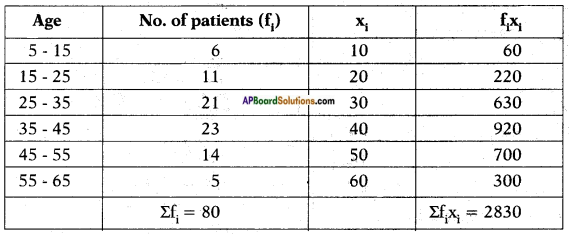
![]()

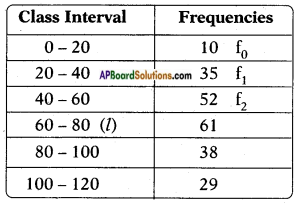
![]()

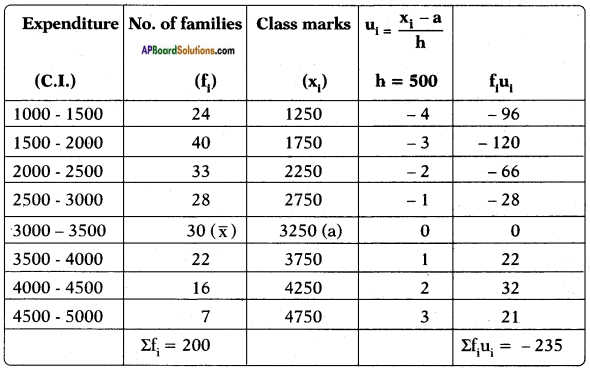
![]()

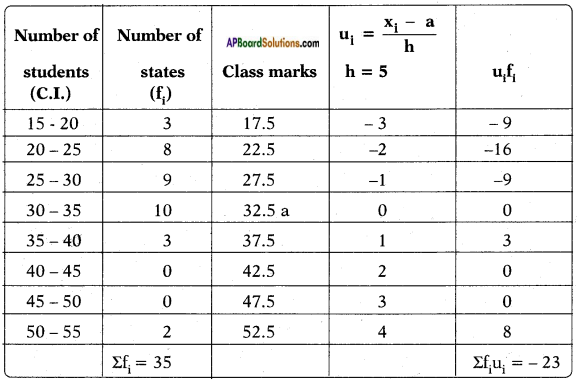
![]()

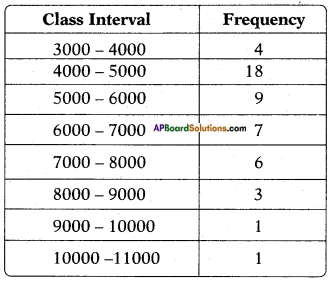
![]()

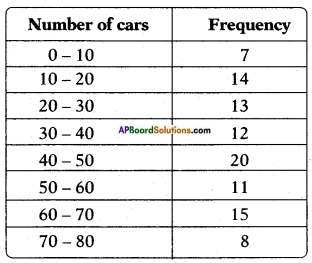
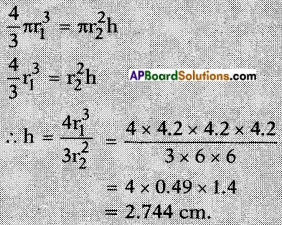

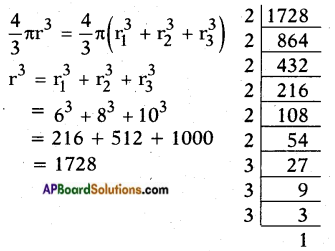
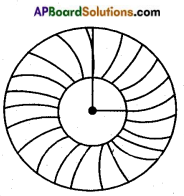



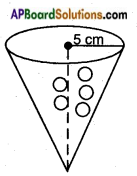
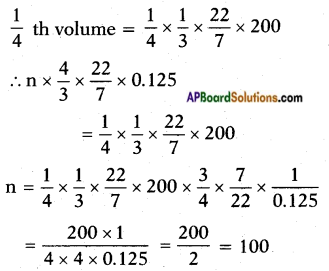

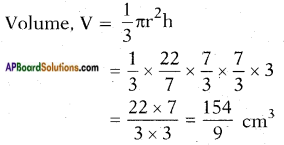
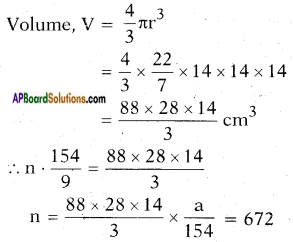
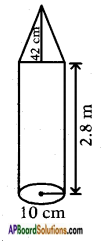
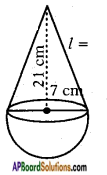
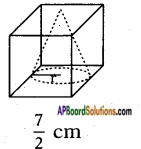

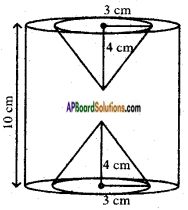
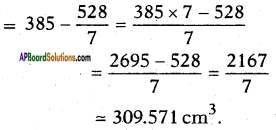
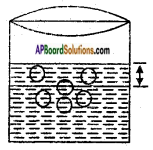
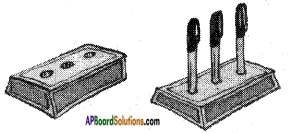
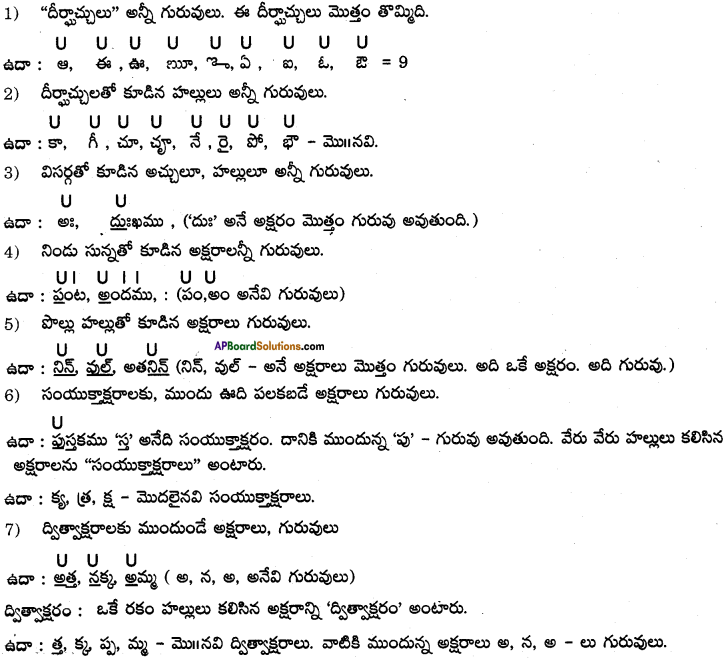
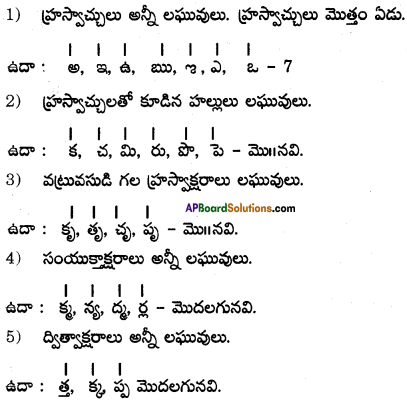


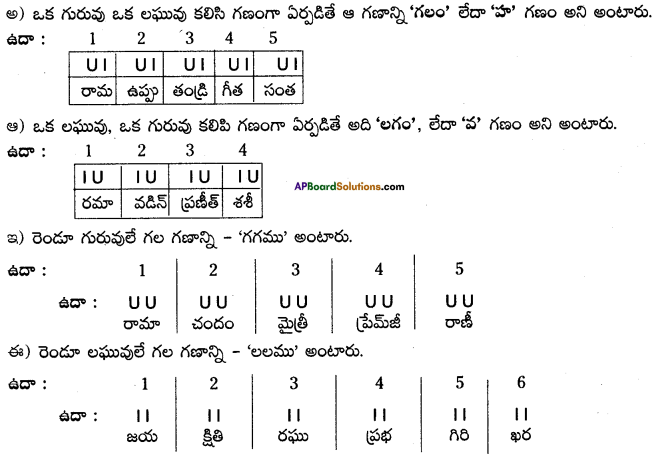
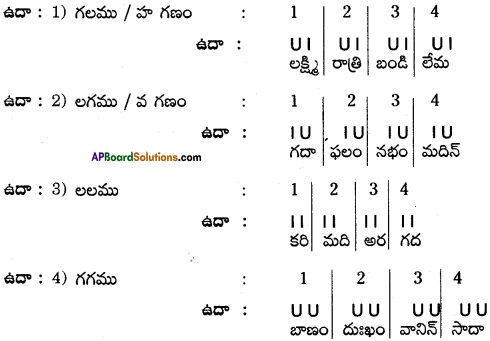

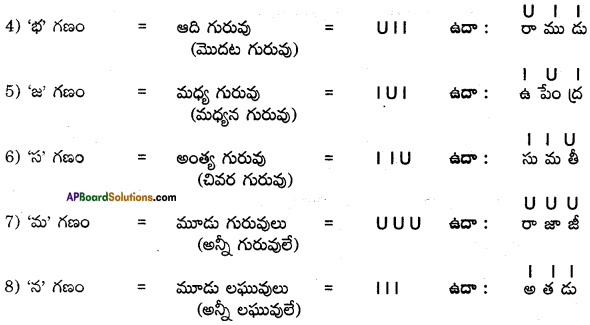
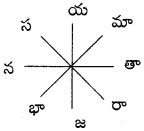


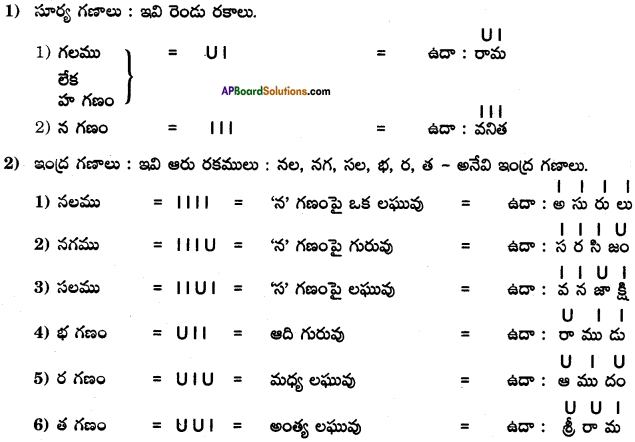







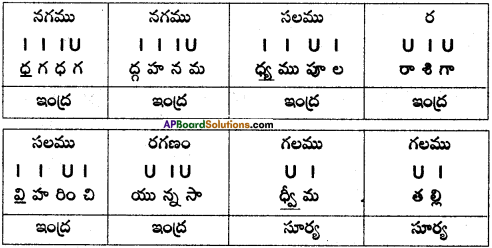
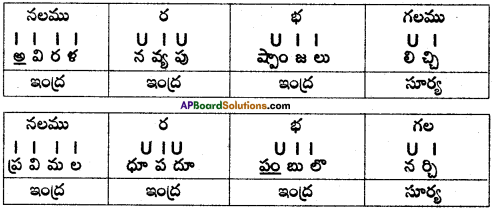









 Answer:
Answer: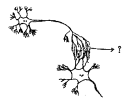 Answer:
Answer: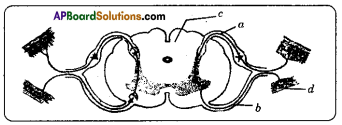 Answer:
Answer: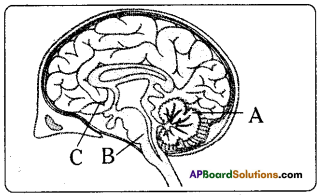 i) This diagram belongs to which system of the body?
i) This diagram belongs to which system of the body?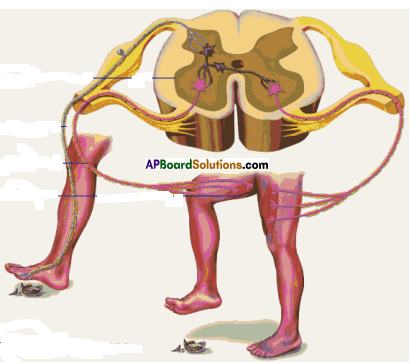 Answer:
Answer: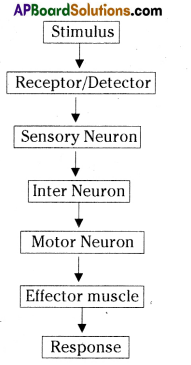
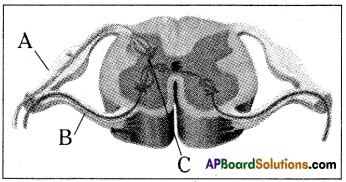 a) To which system does the diagram belong ?
a) To which system does the diagram belong ? i) Brain receives the information, analyses and produces the reponse.
i) Brain receives the information, analyses and produces the reponse.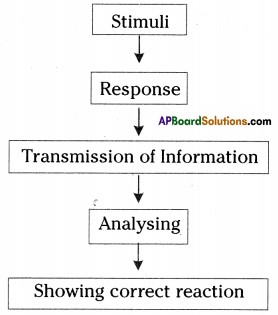
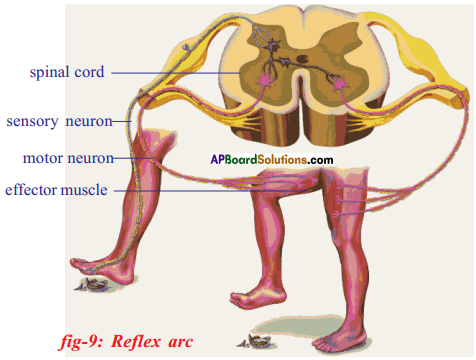 Functions of different parts of Reflex arc : Reflex arc consists of a receptor, a sensory nerve (afferent) an association neuron or inter neuron, motor nerve (effferent) and a effector organ.
Functions of different parts of Reflex arc : Reflex arc consists of a receptor, a sensory nerve (afferent) an association neuron or inter neuron, motor nerve (effferent) and a effector organ.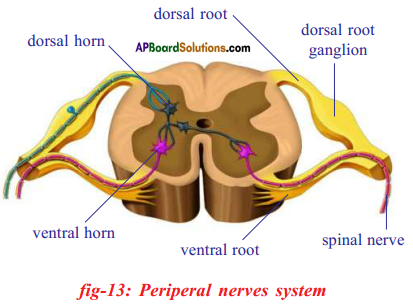
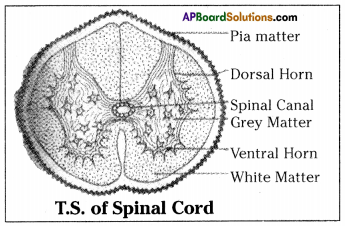

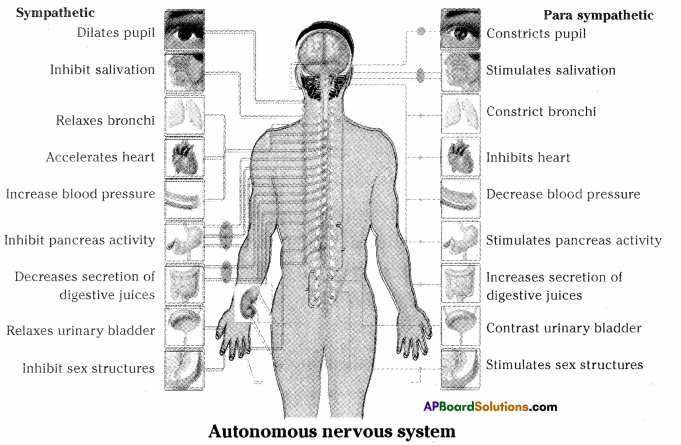 i) To which organs of the body do the nerves go from the ganglions near the vertebral column ?
i) To which organs of the body do the nerves go from the ganglions near the vertebral column ?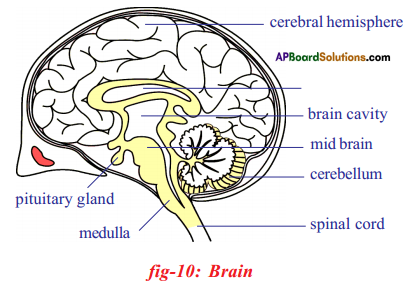
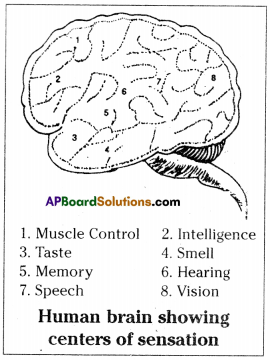
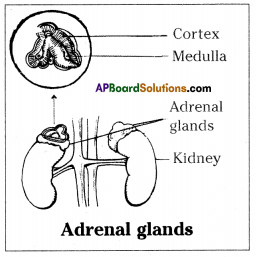


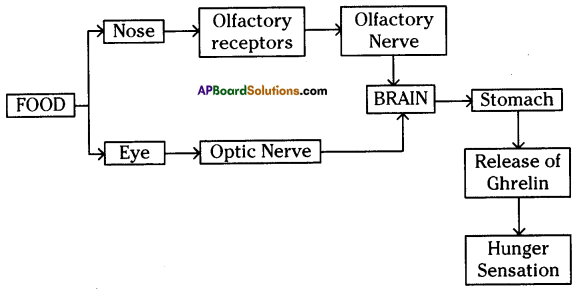
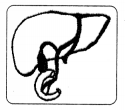 Answer:
Answer: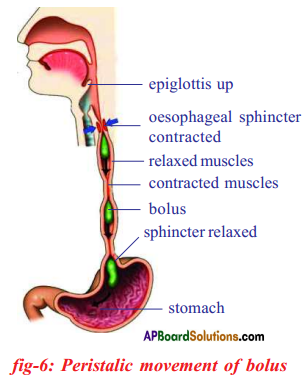 b) Circular muscles and longitudinal muscles of oesophagus help in the movement of food ‘bolus’.
b) Circular muscles and longitudinal muscles of oesophagus help in the movement of food ‘bolus’.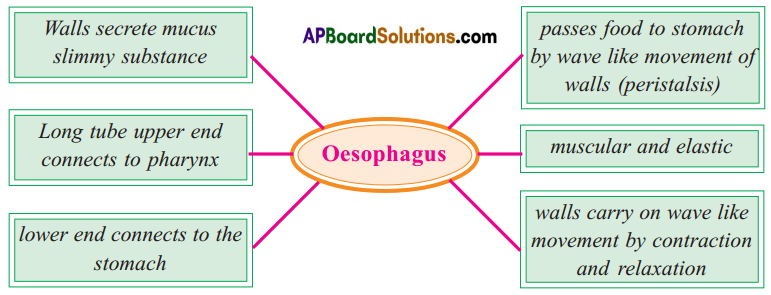
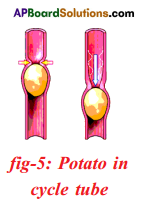 Procedure:
Procedure: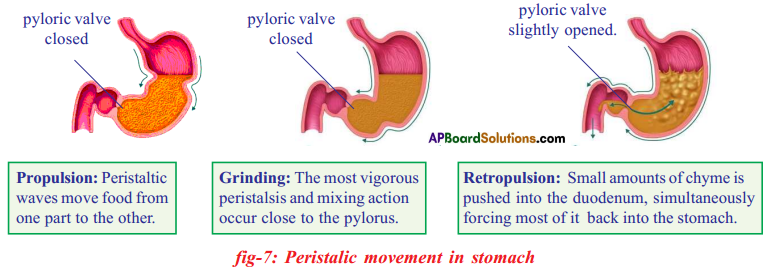
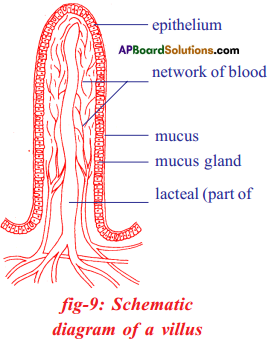
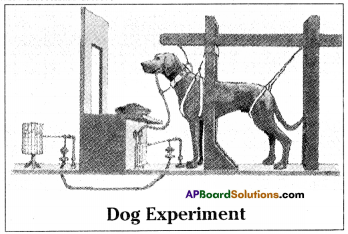
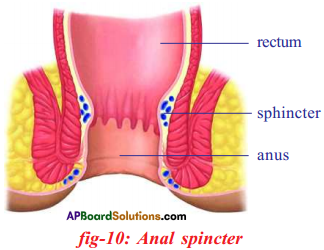
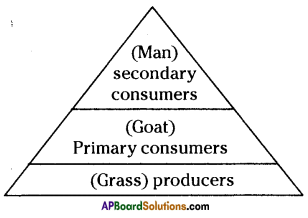
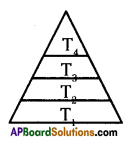
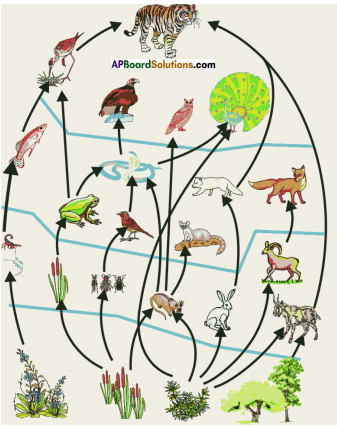 i) Write any two food chains from the diagram.
i) Write any two food chains from the diagram.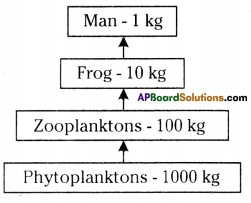 Answer:
Answer: i) As per the number of organisms in the tropic level, which group of organisms
i) As per the number of organisms in the tropic level, which group of organisms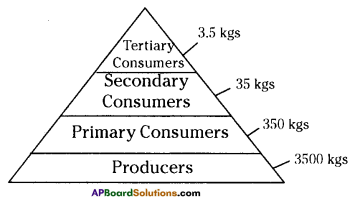


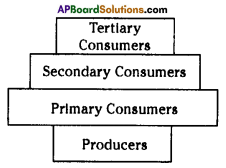
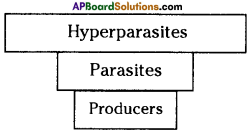
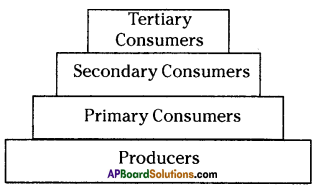
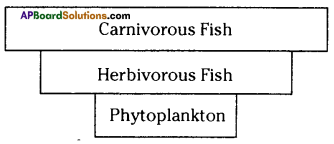
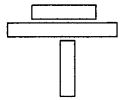

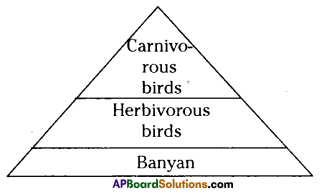
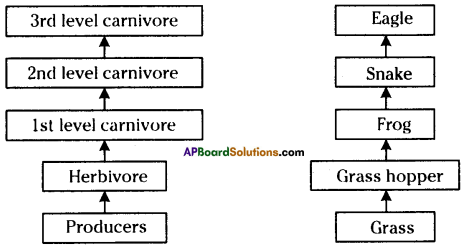
 The pyramid of biomass for the given food chain, at each step 90% of the food is lost. That means 1000 kg of phytoplankton to produce 100 kg of Zooplankton to form 10 kg of fish to produce 1kg of human tissues. The fewer the steps in the food chain the more energy will be for the species at the top.
The pyramid of biomass for the given food chain, at each step 90% of the food is lost. That means 1000 kg of phytoplankton to produce 100 kg of Zooplankton to form 10 kg of fish to produce 1kg of human tissues. The fewer the steps in the food chain the more energy will be for the species at the top.